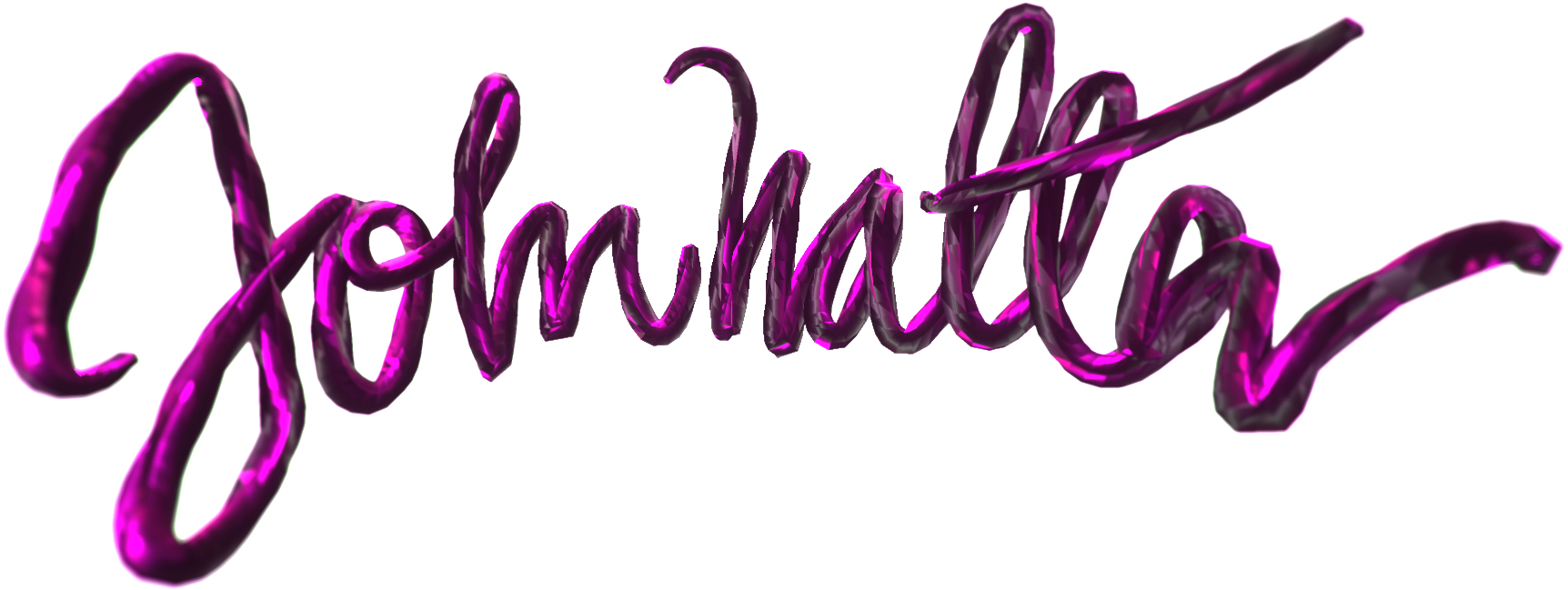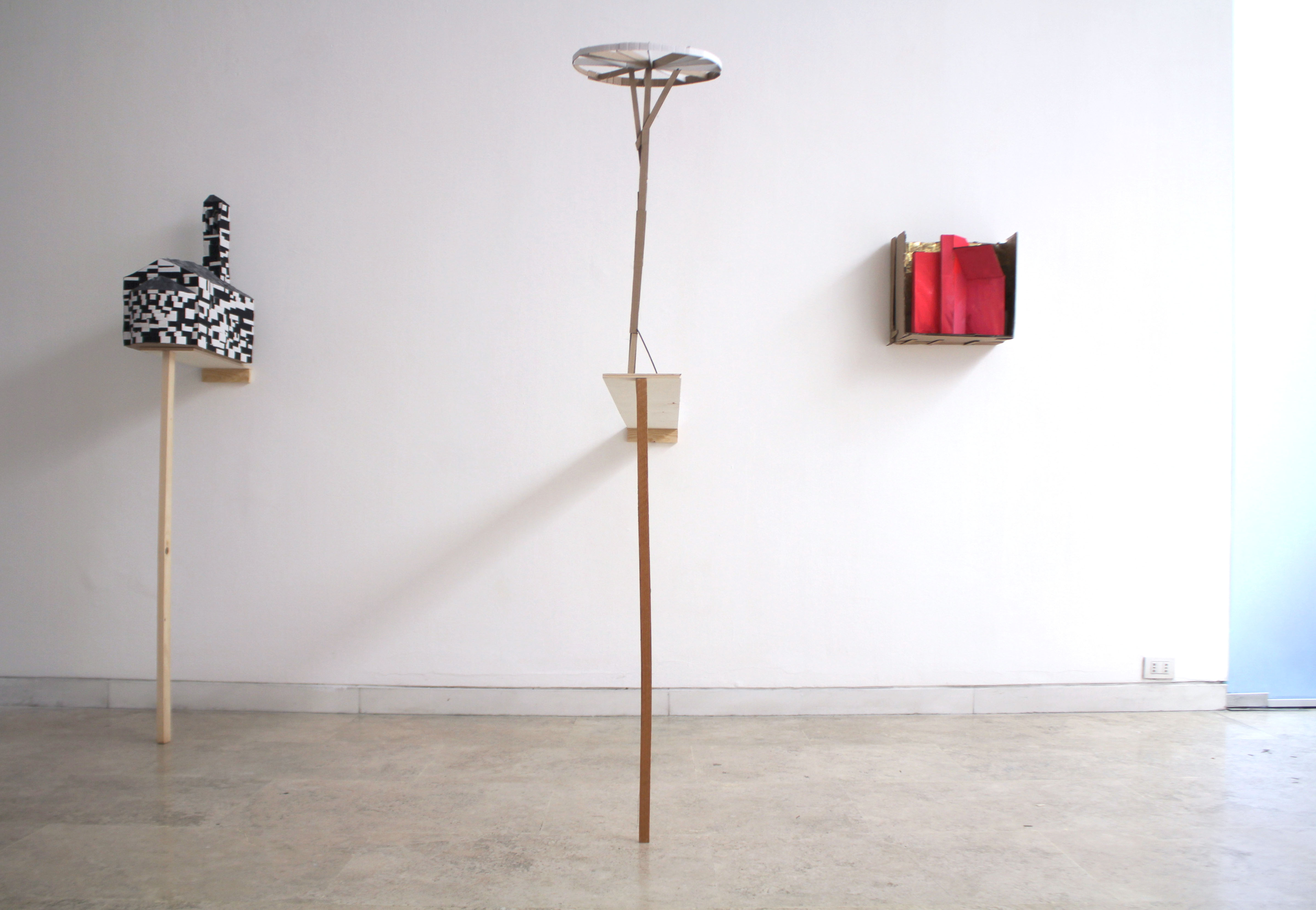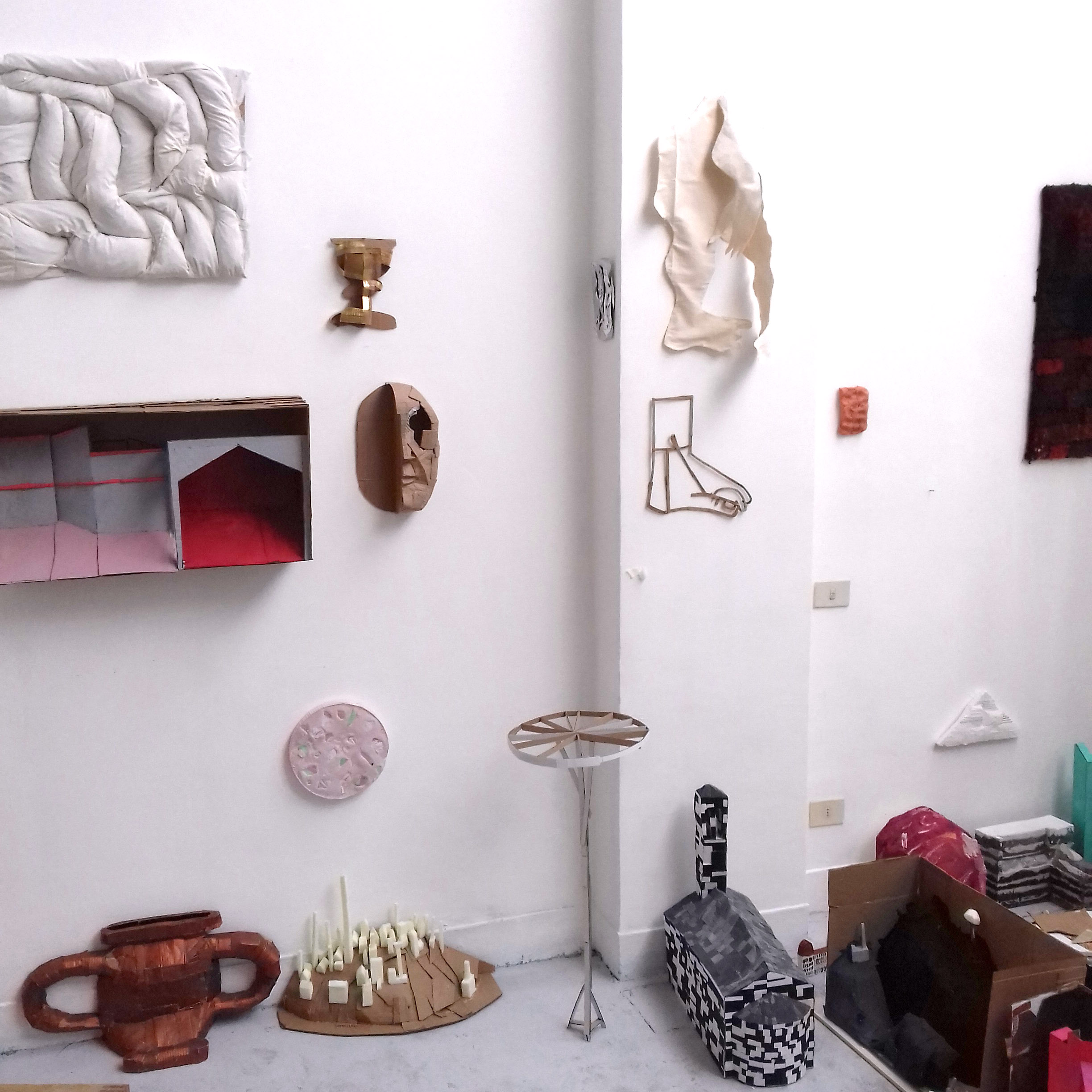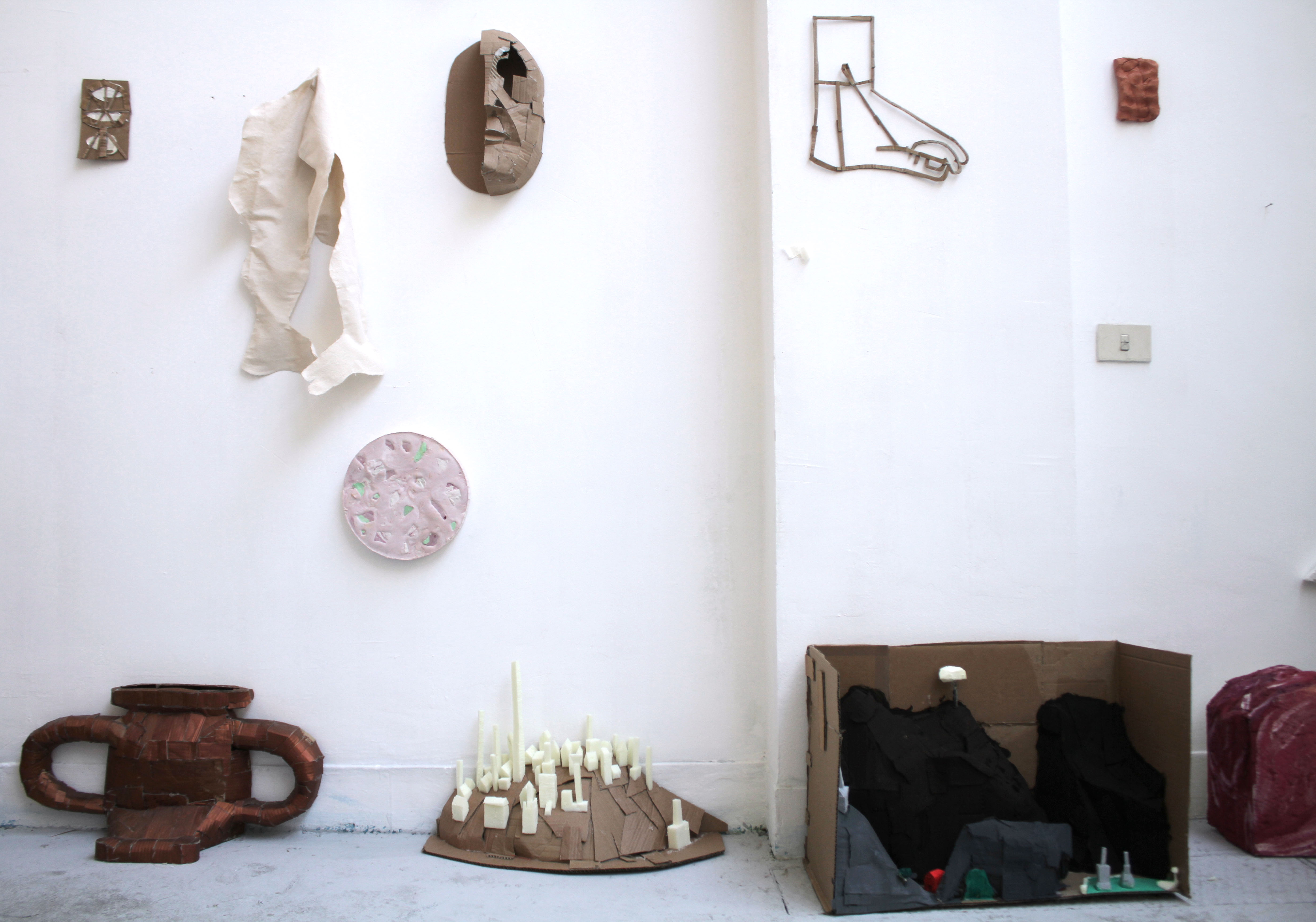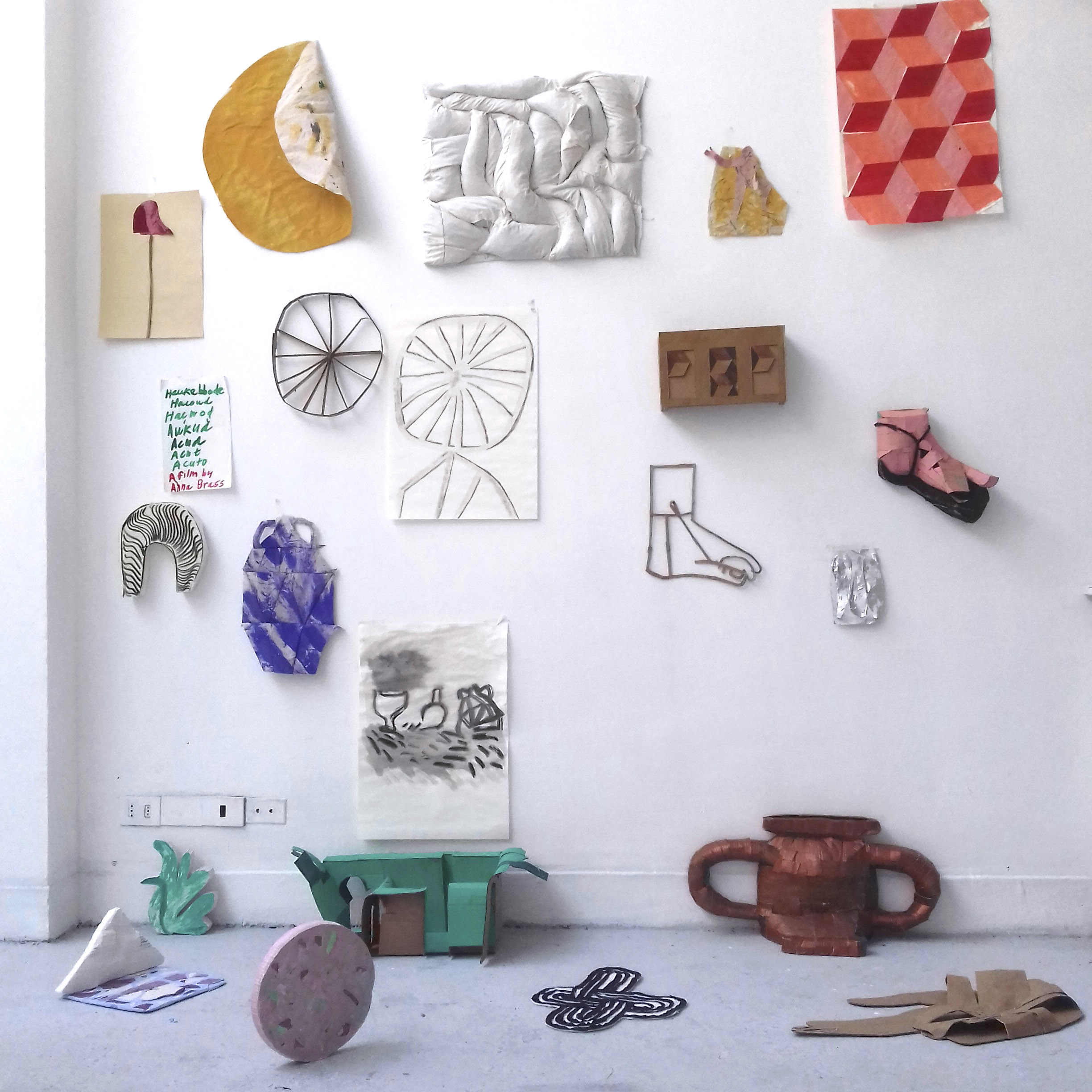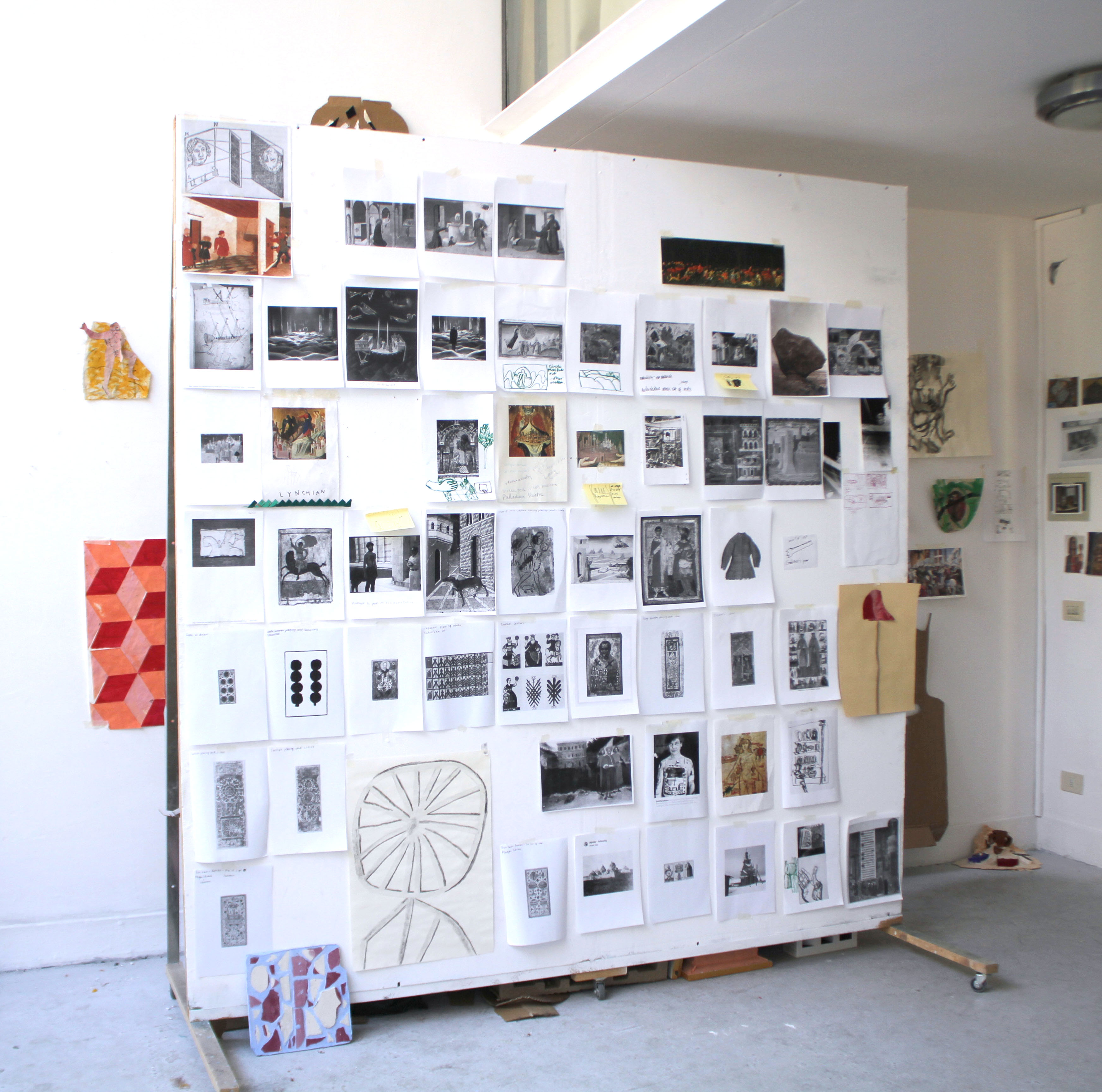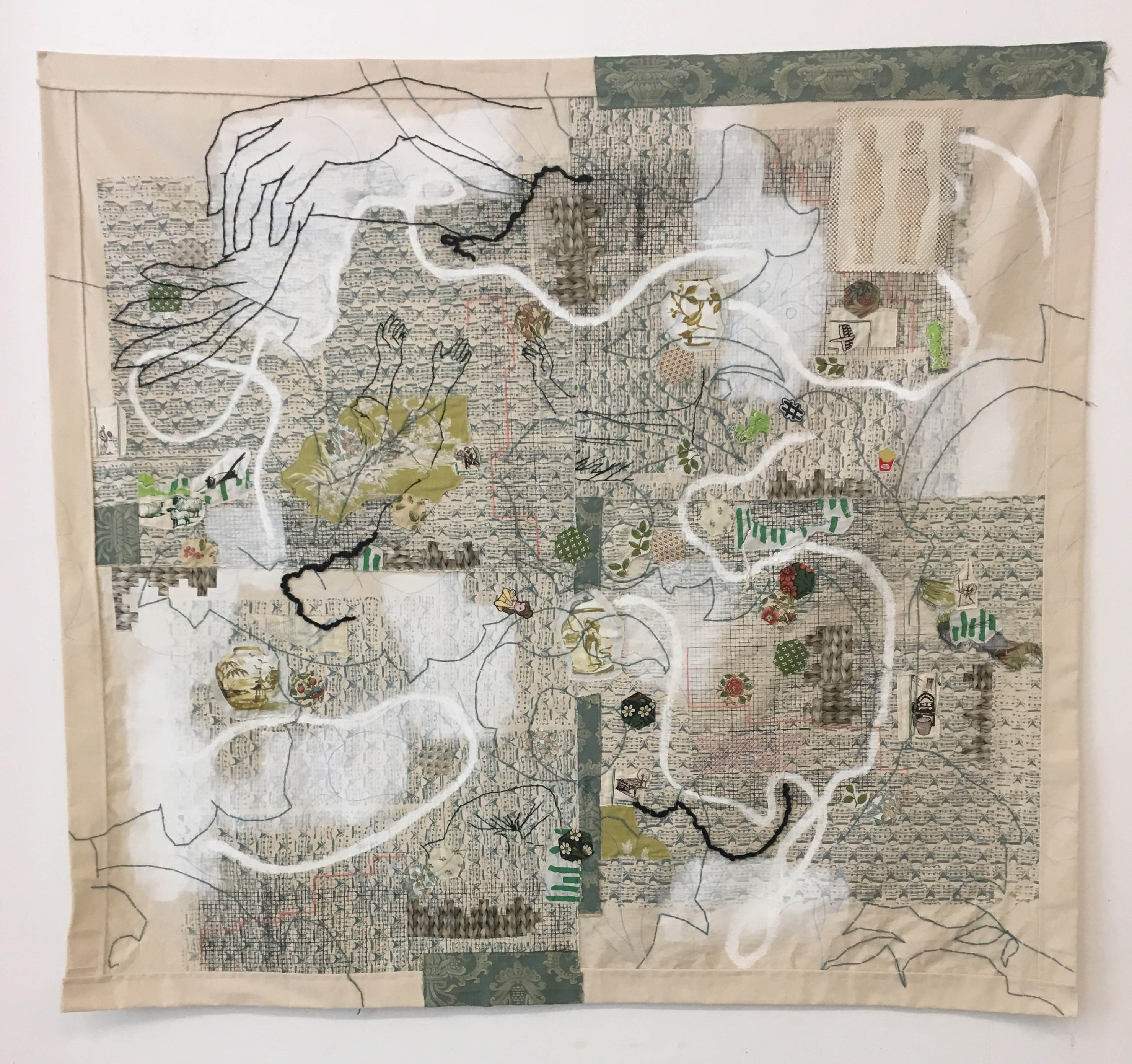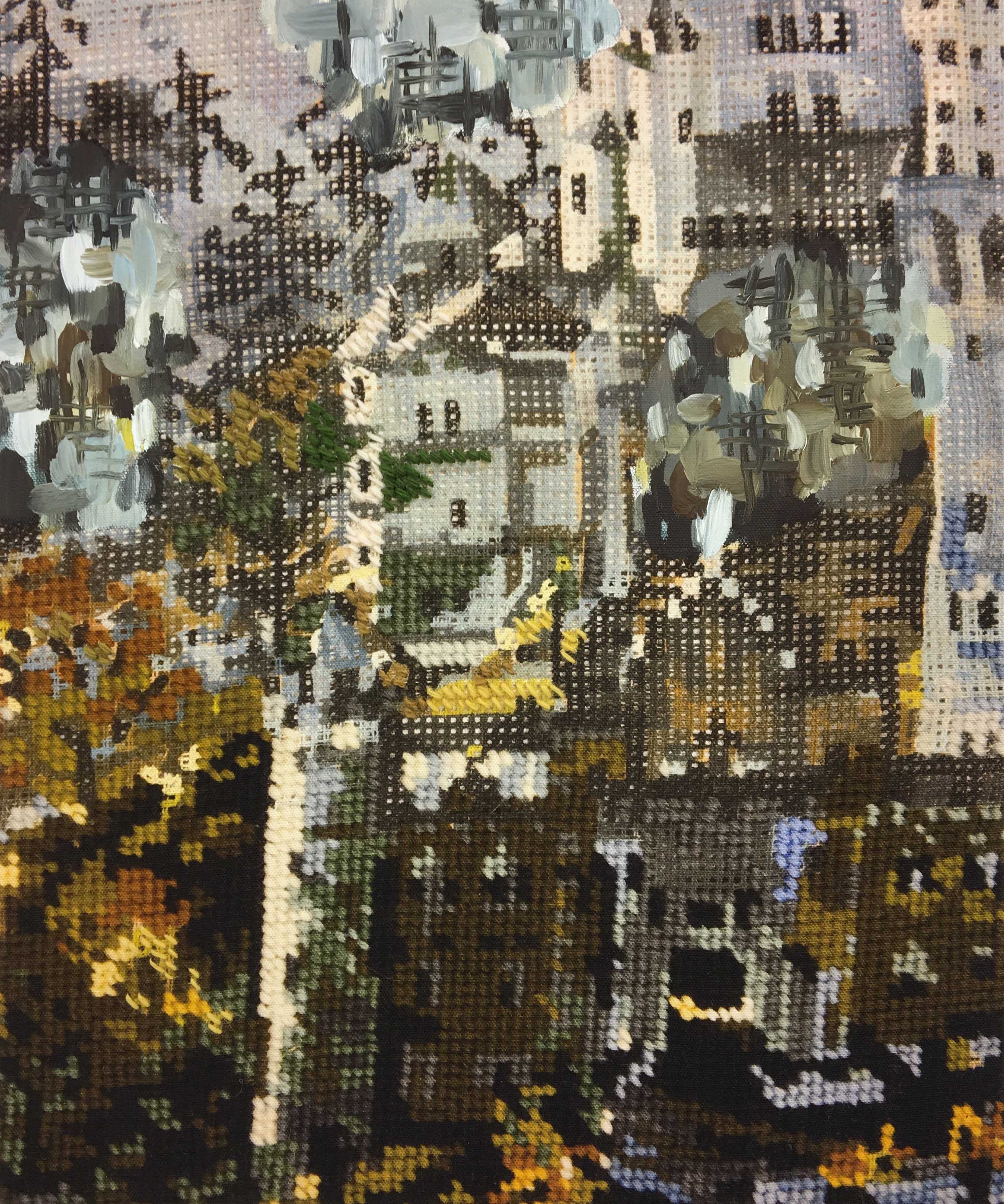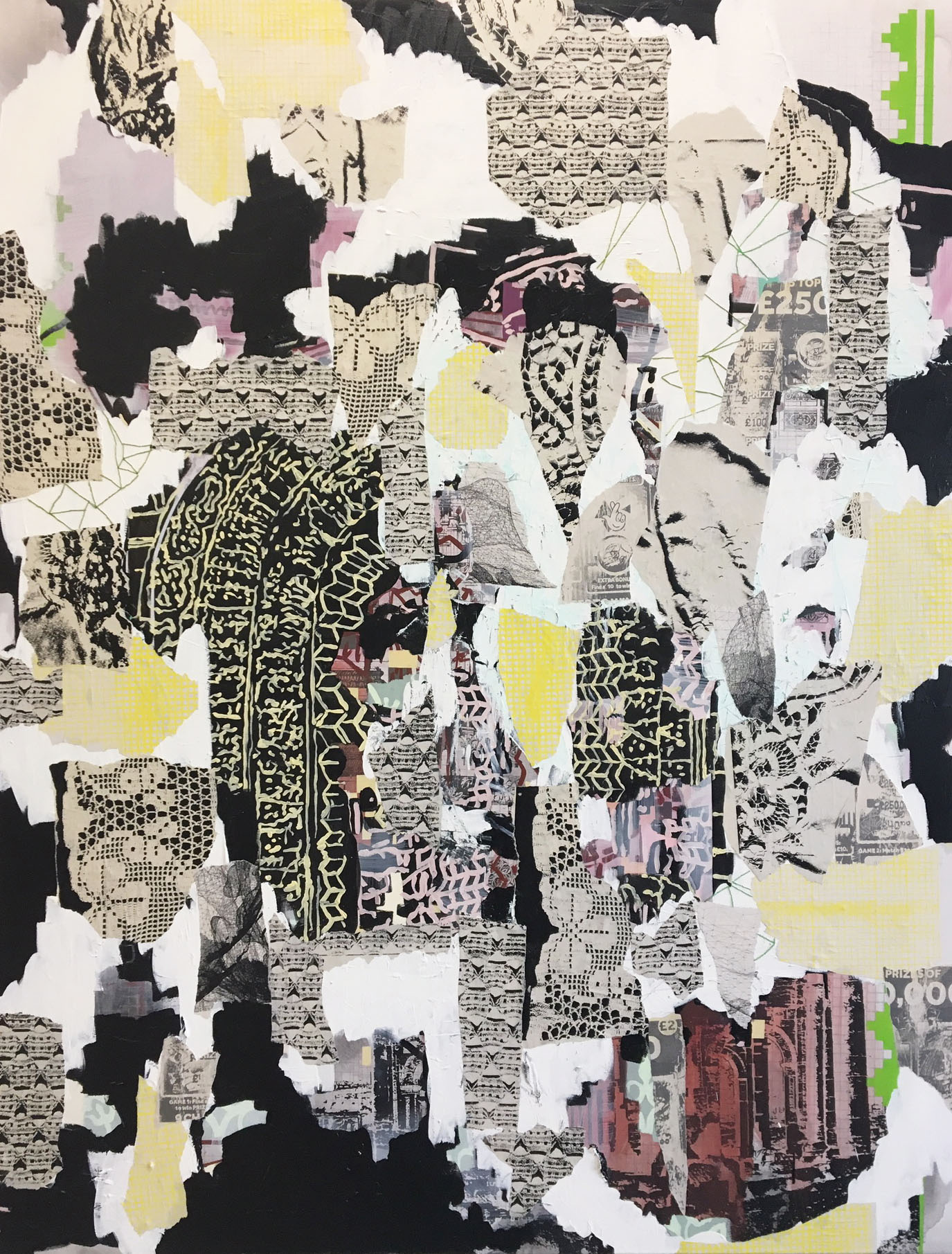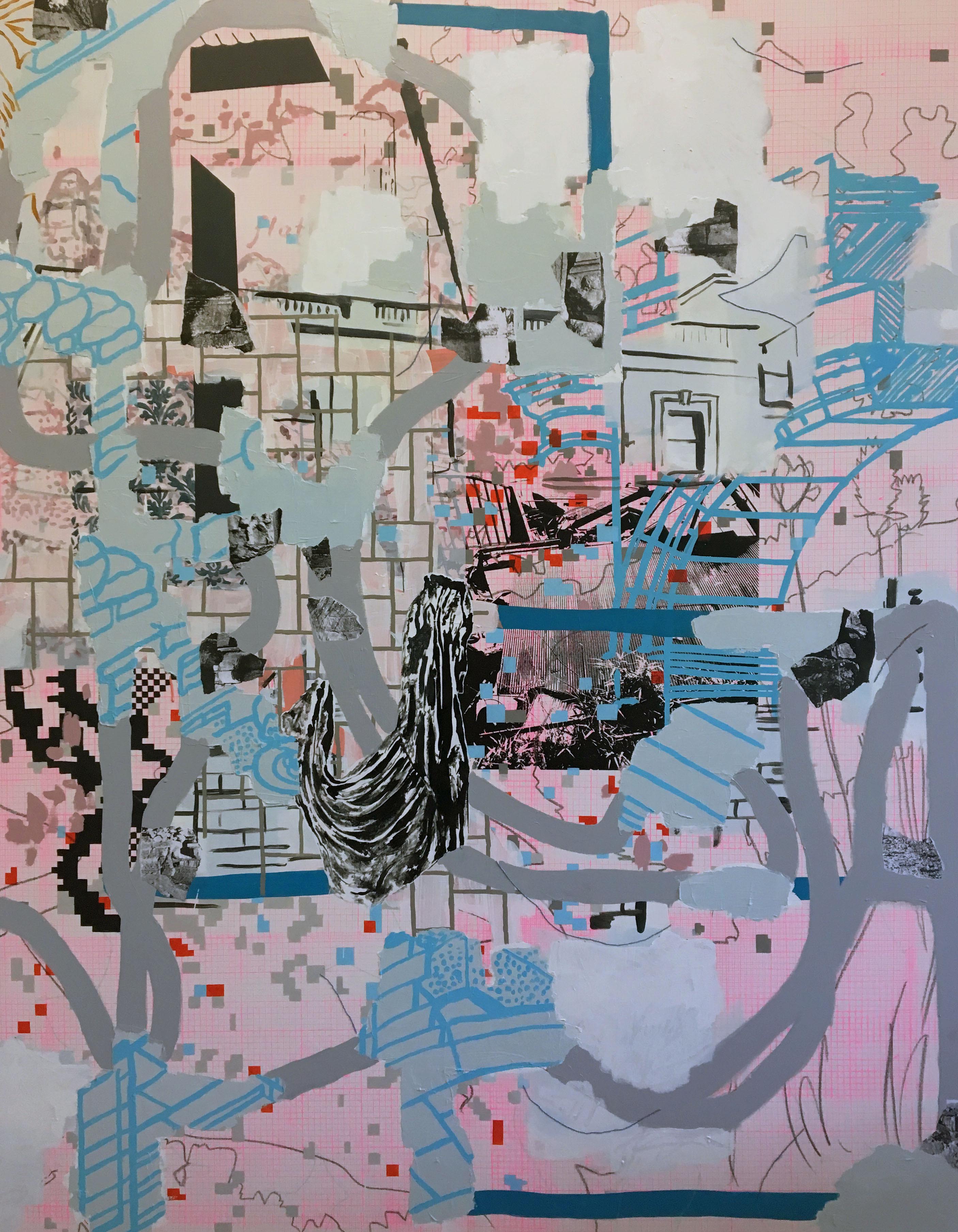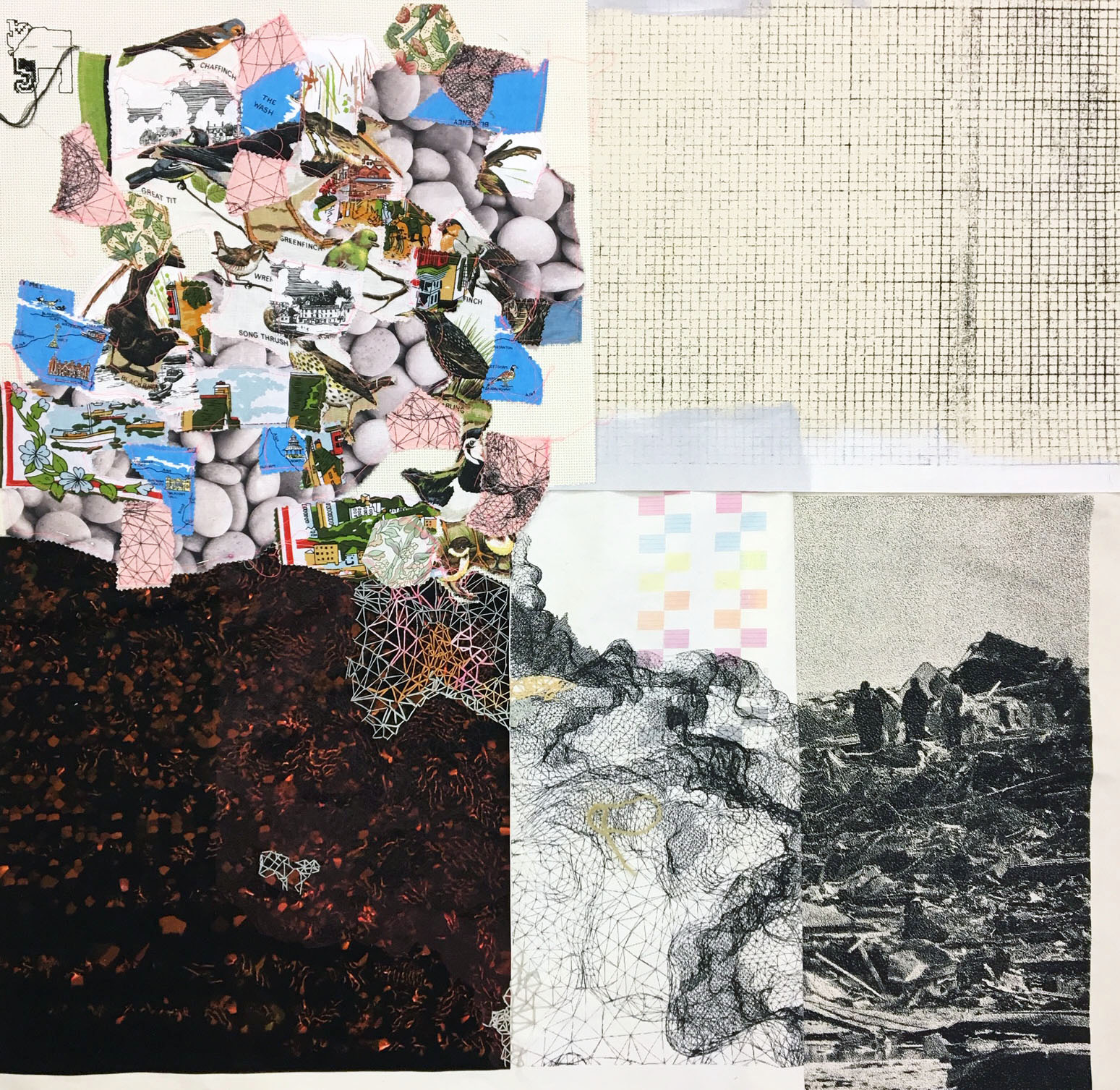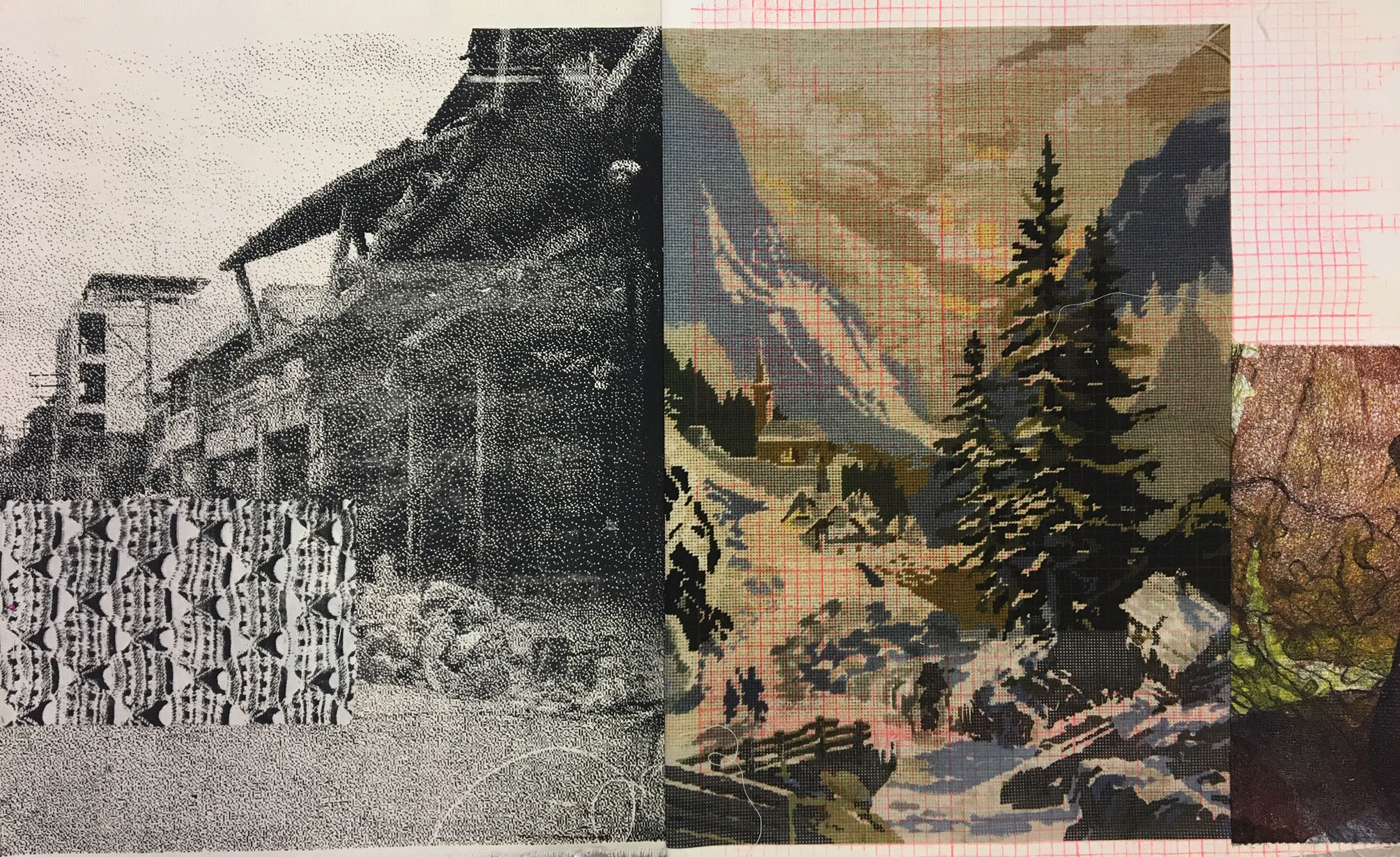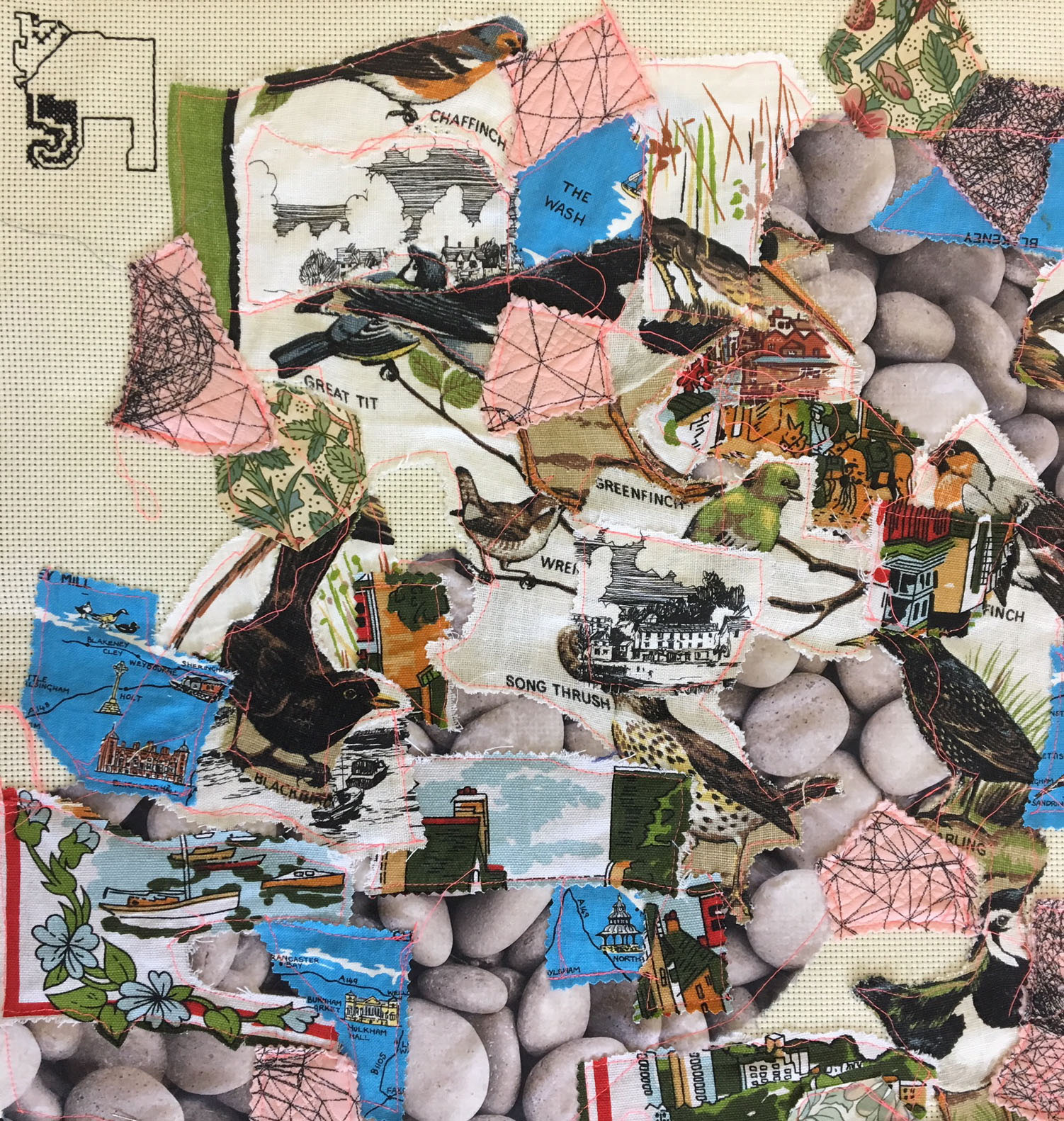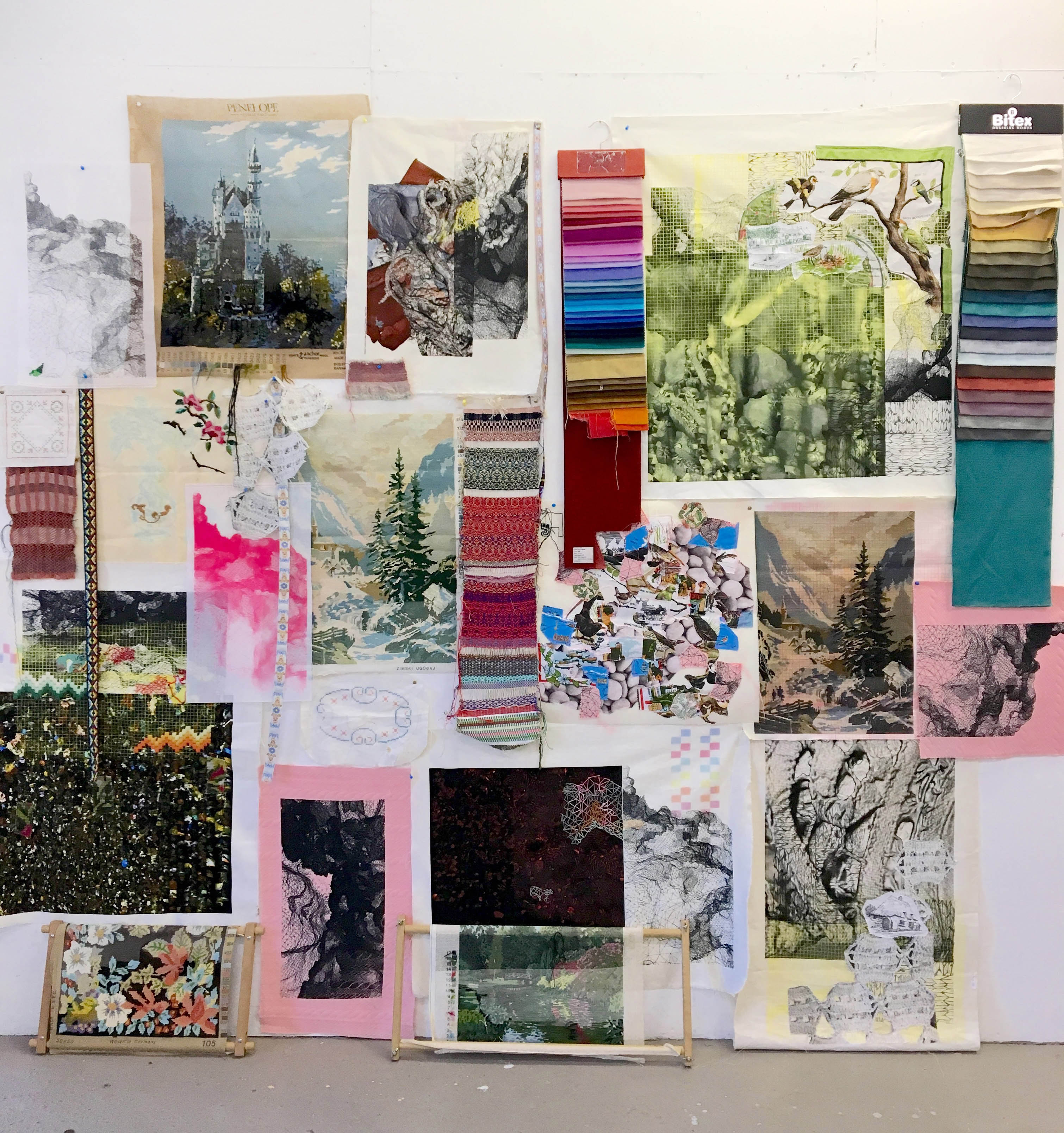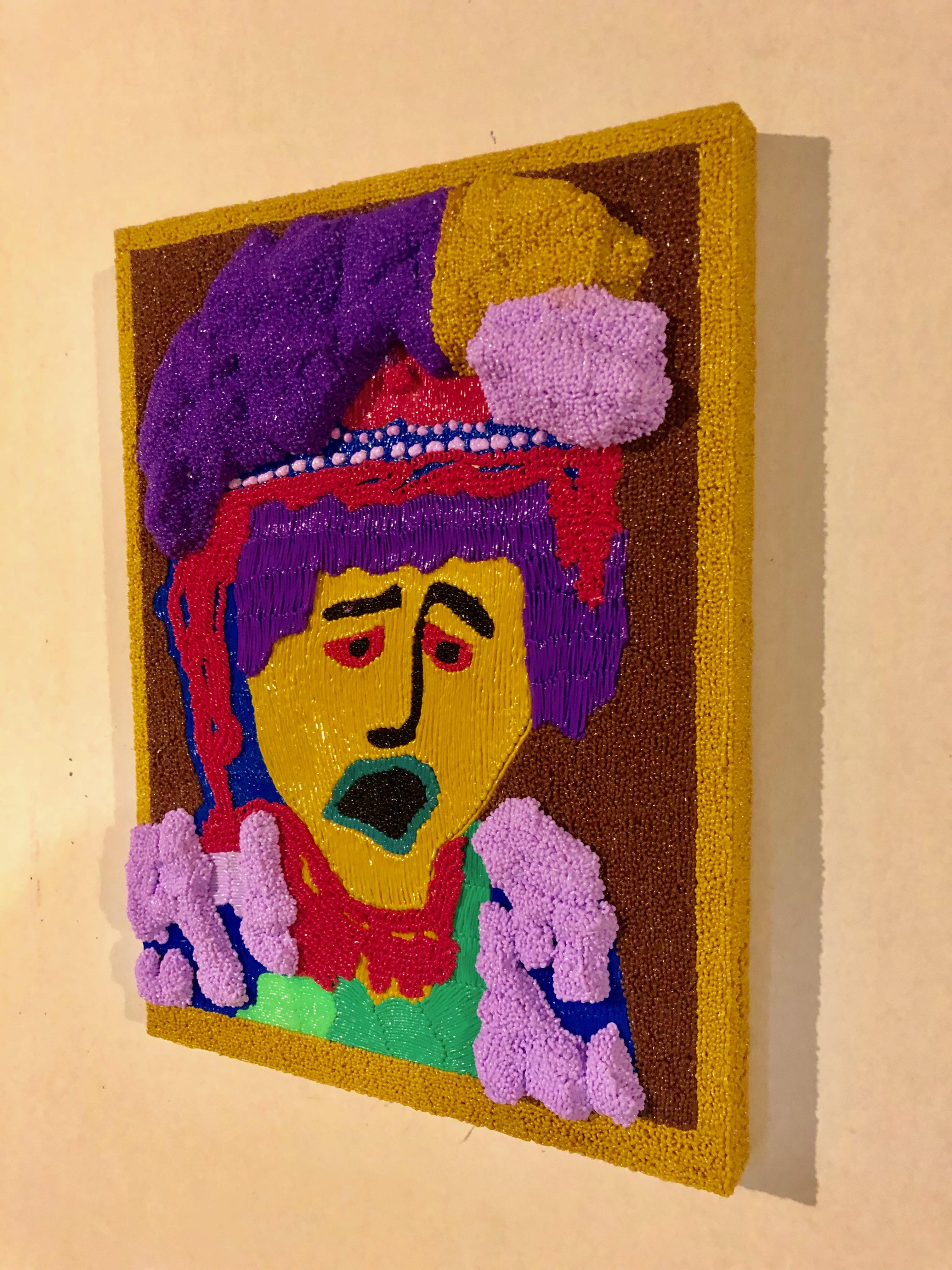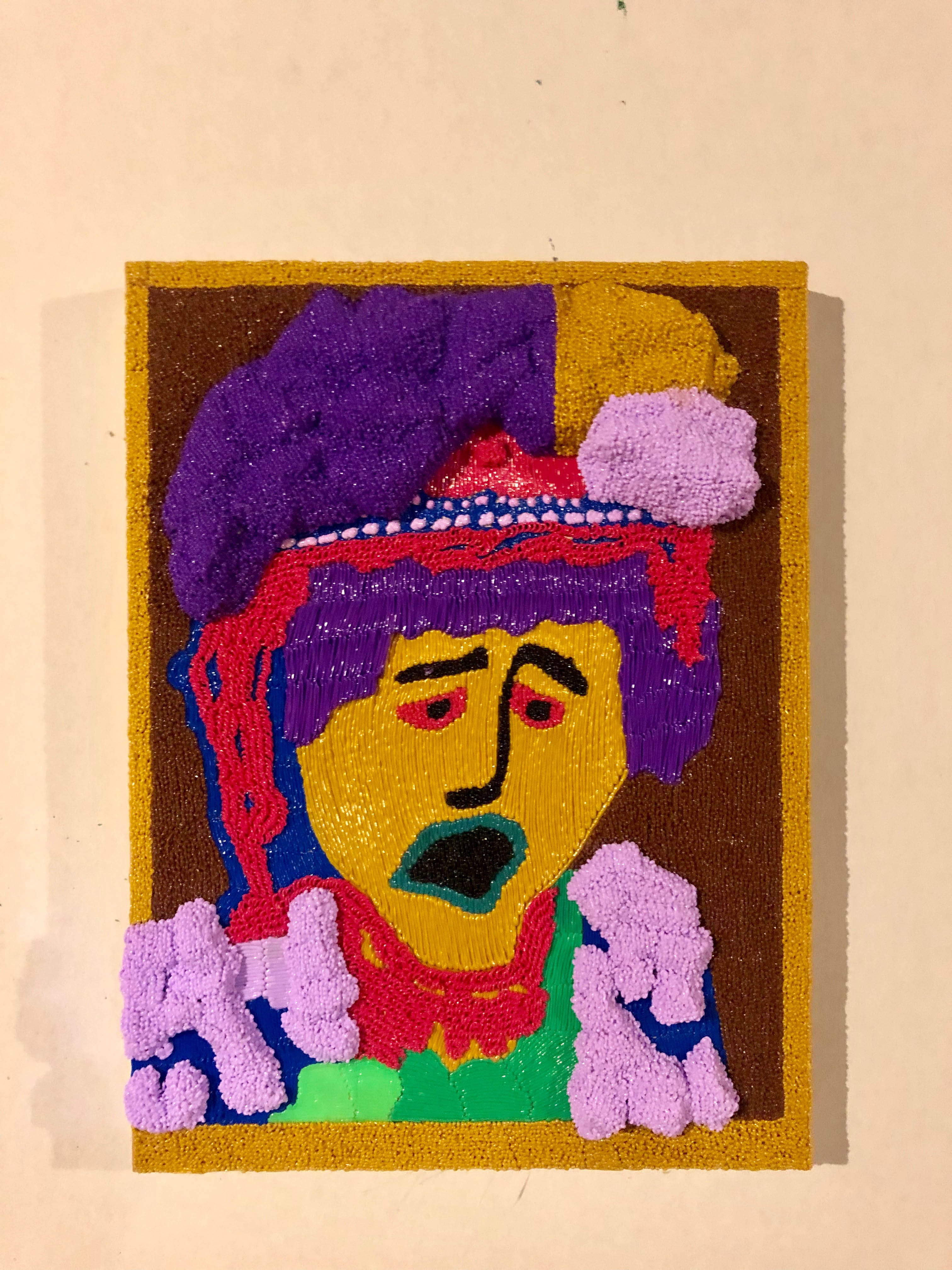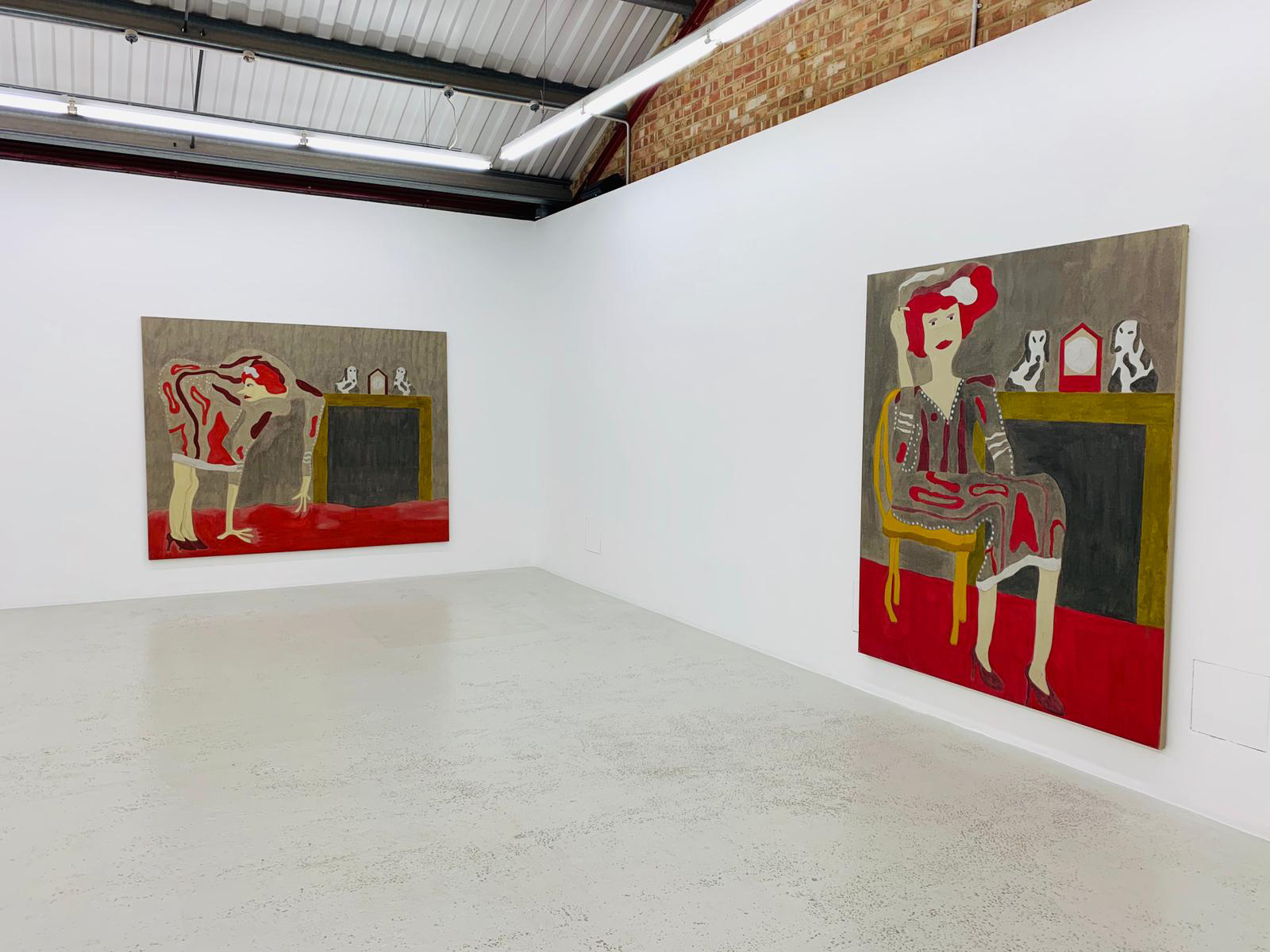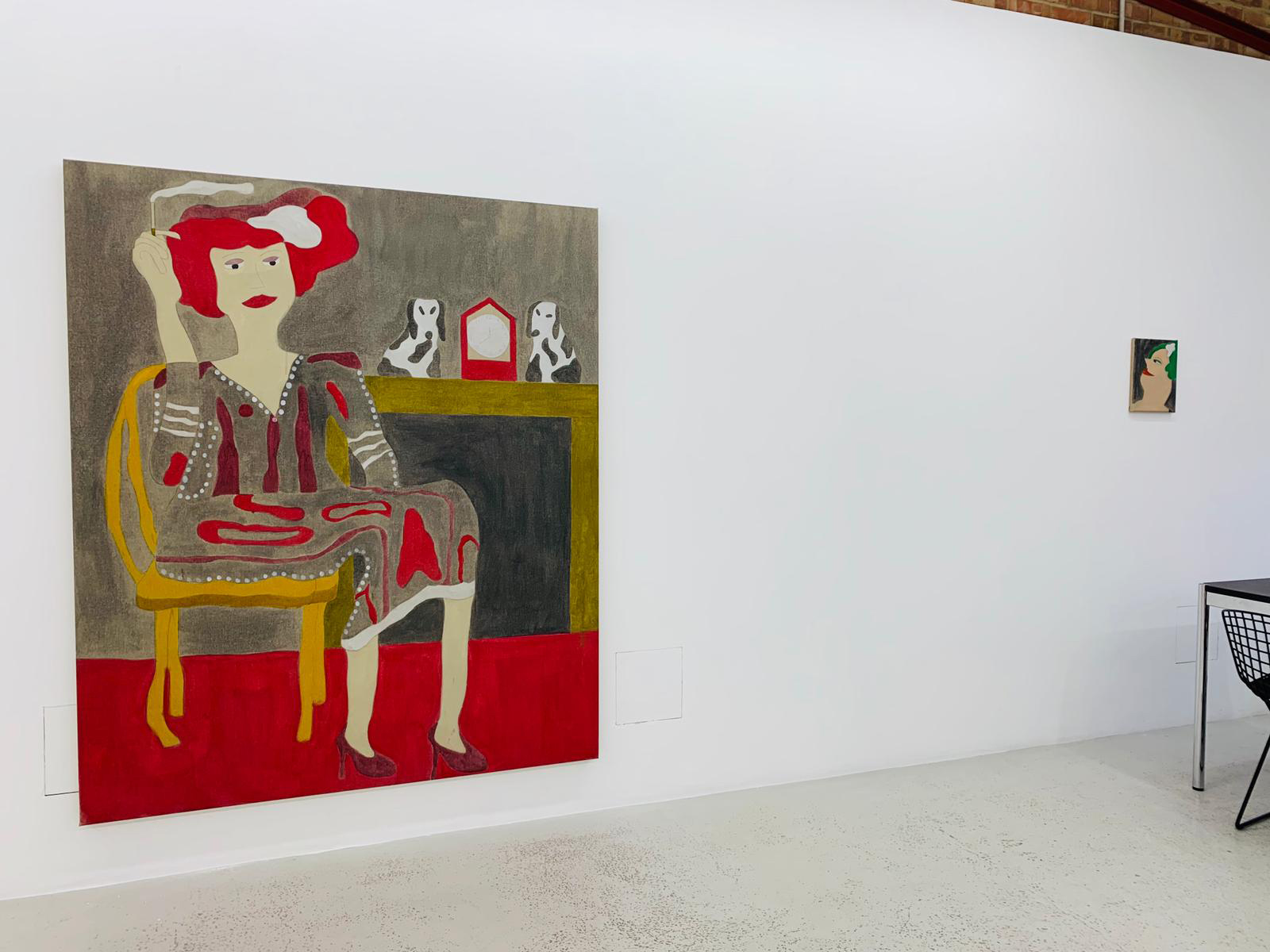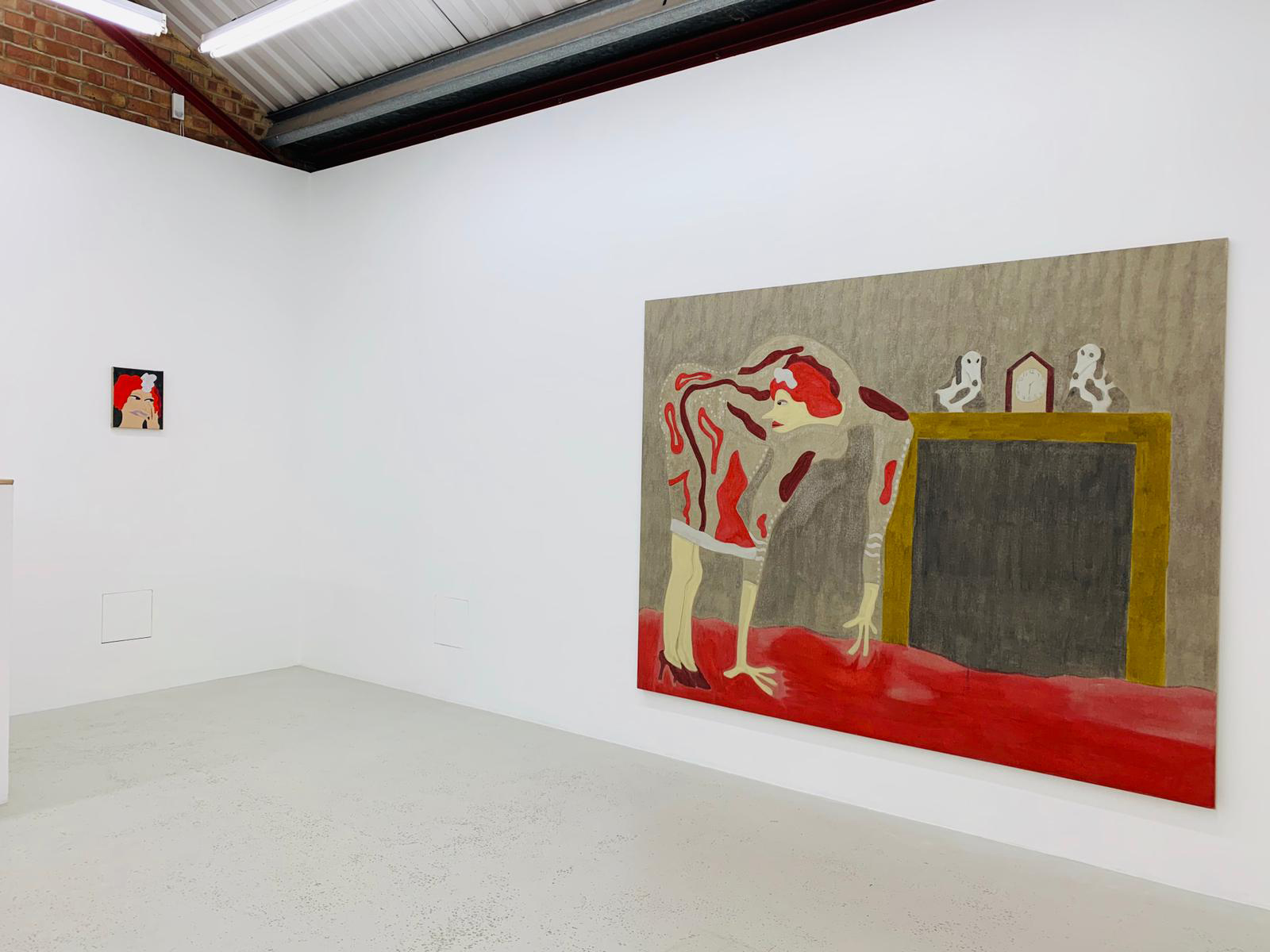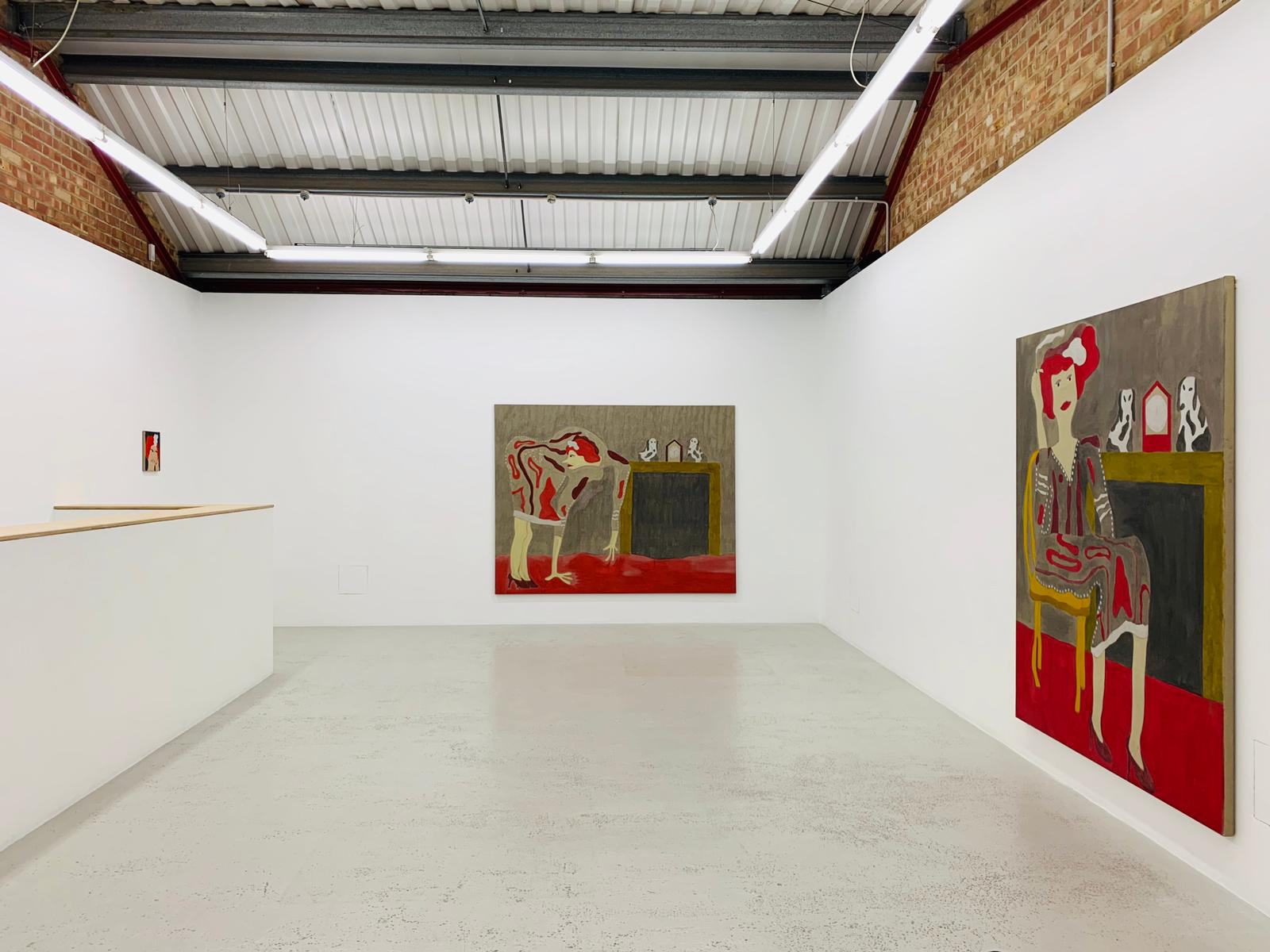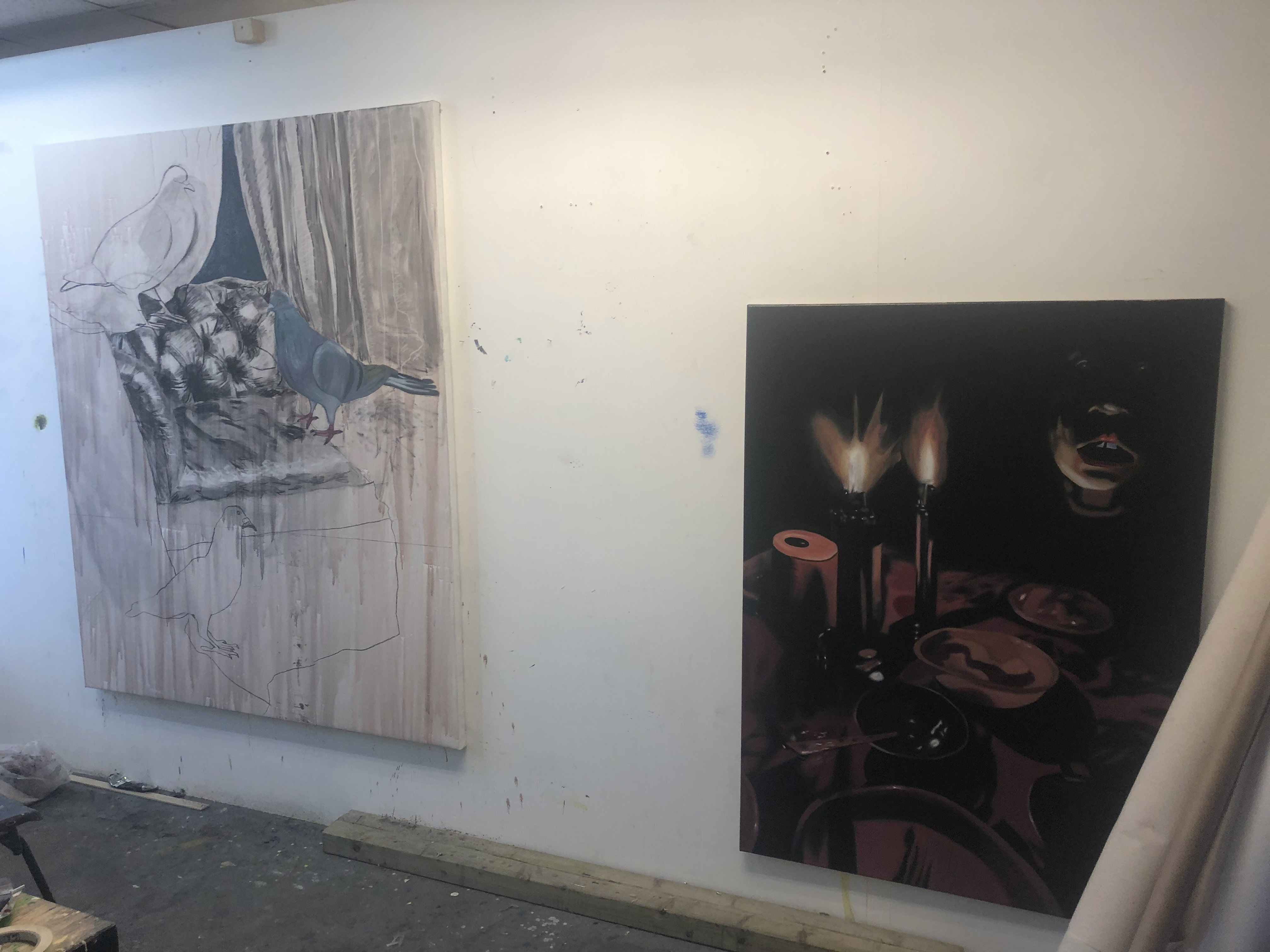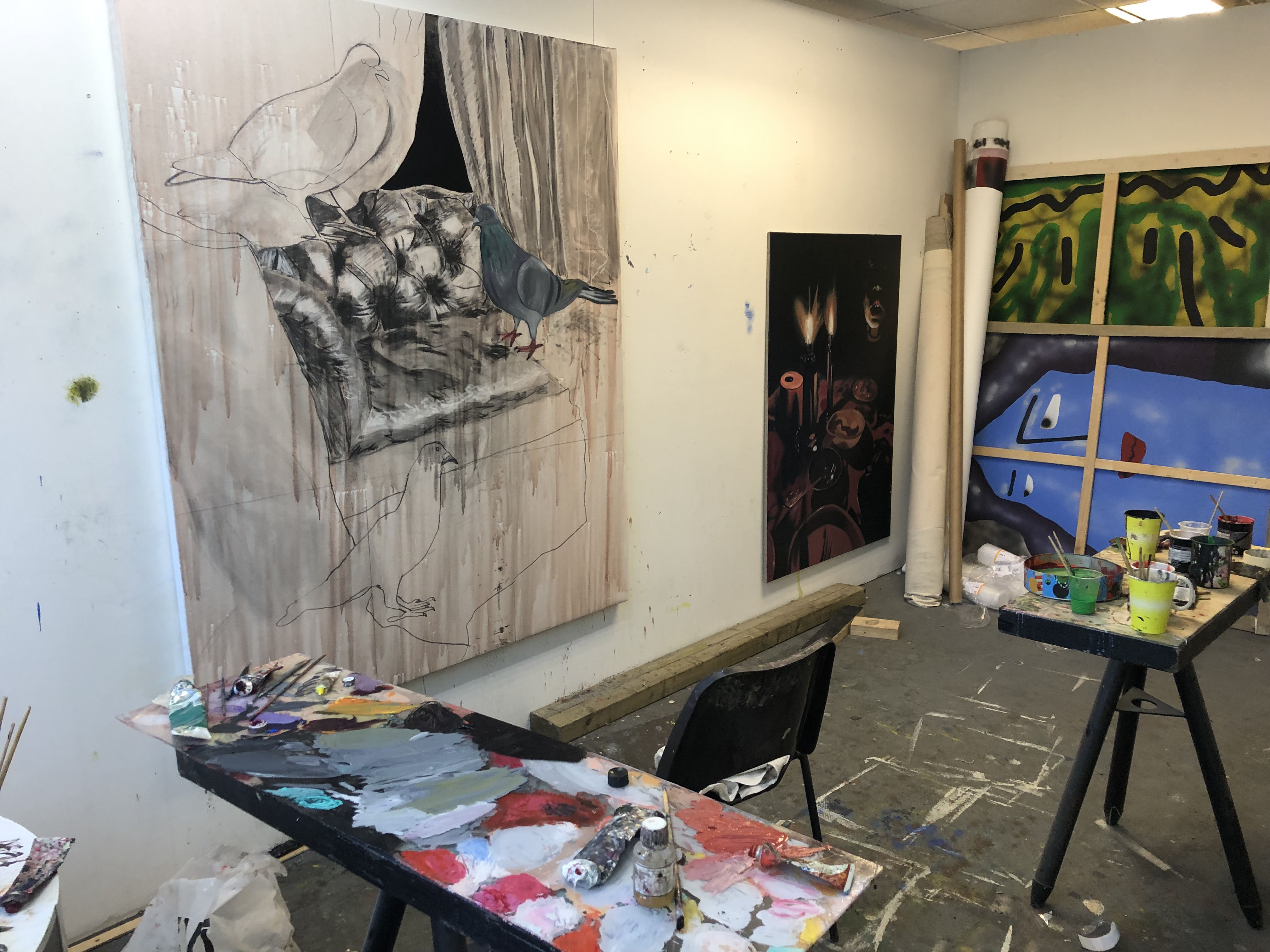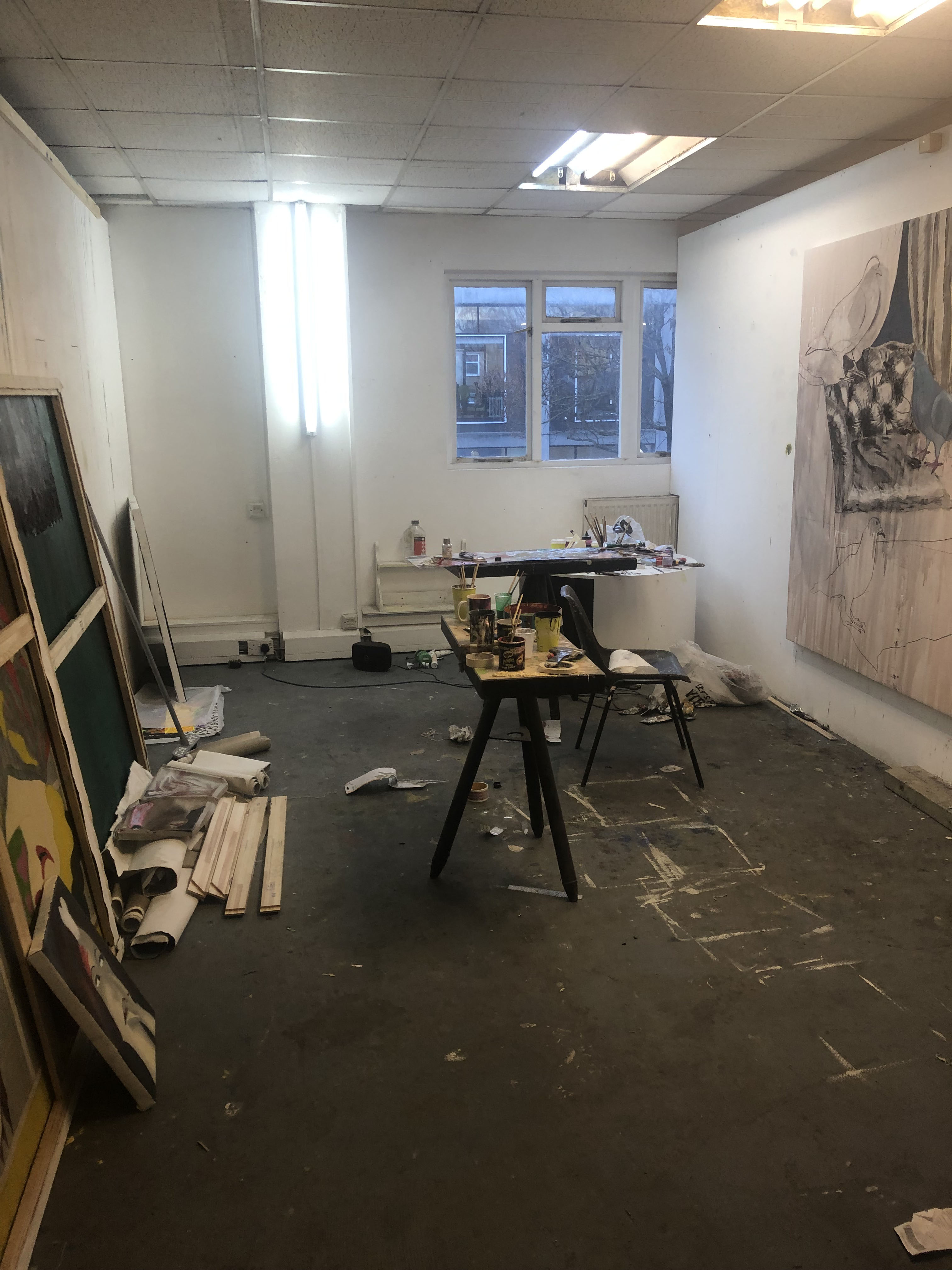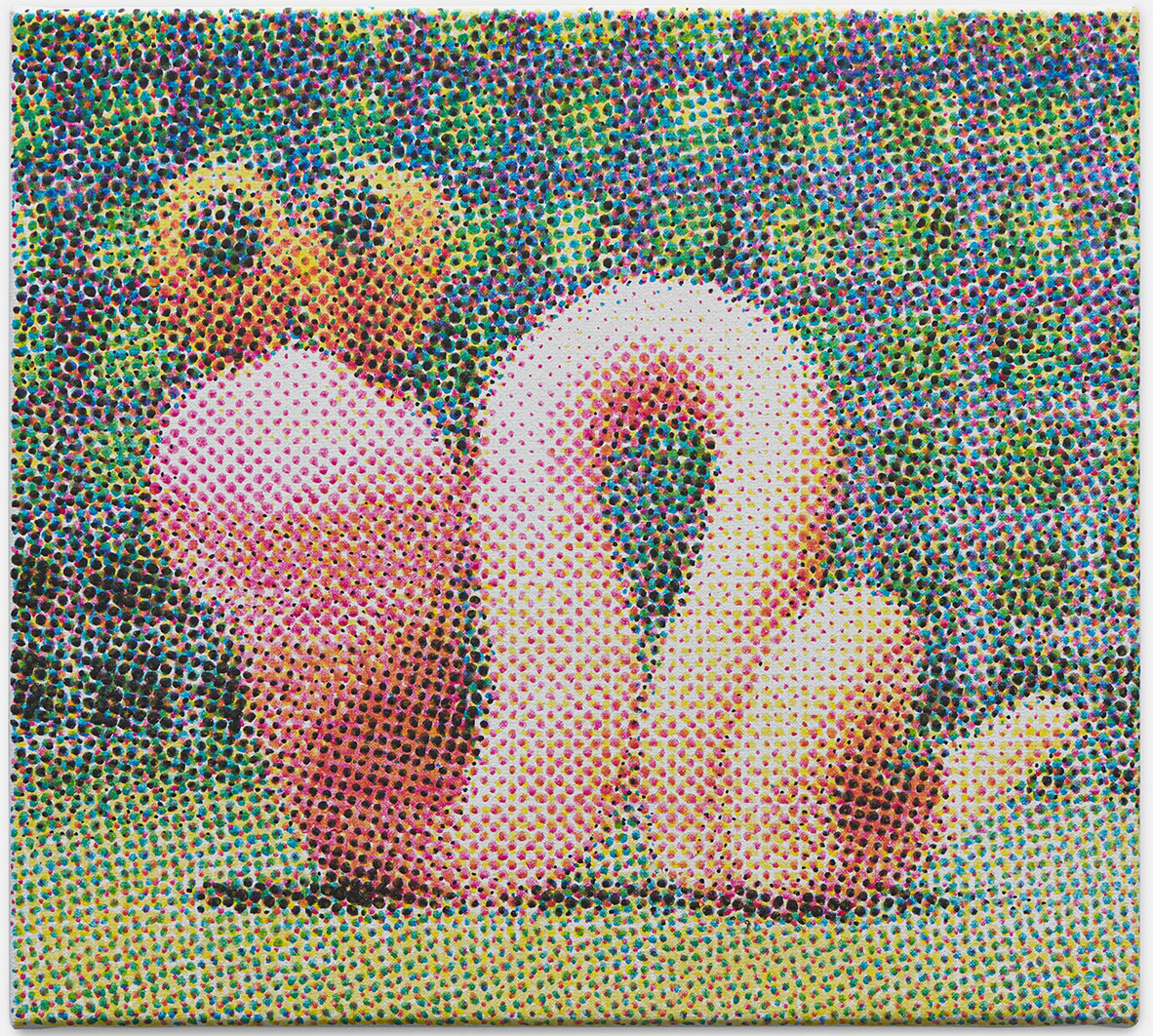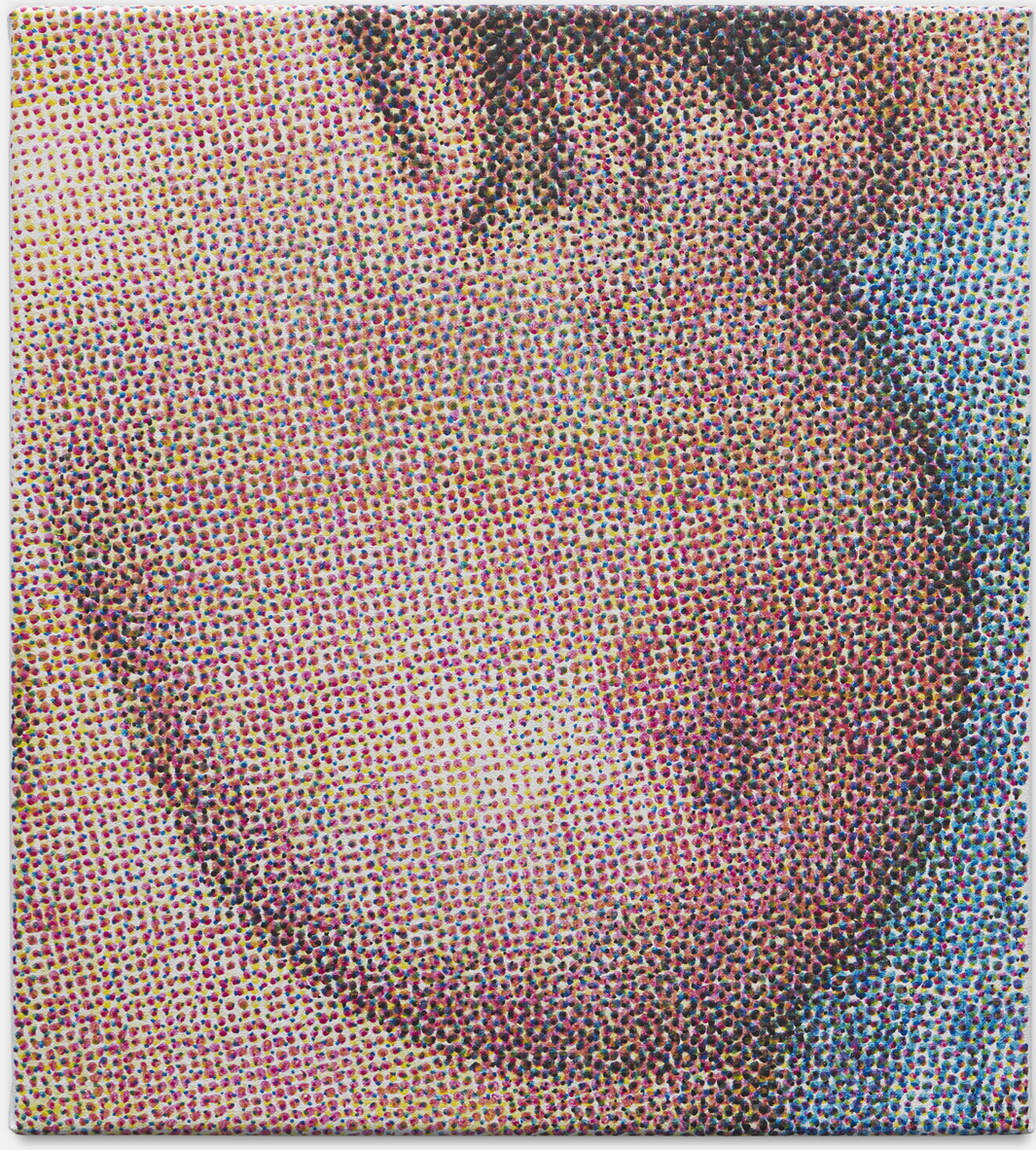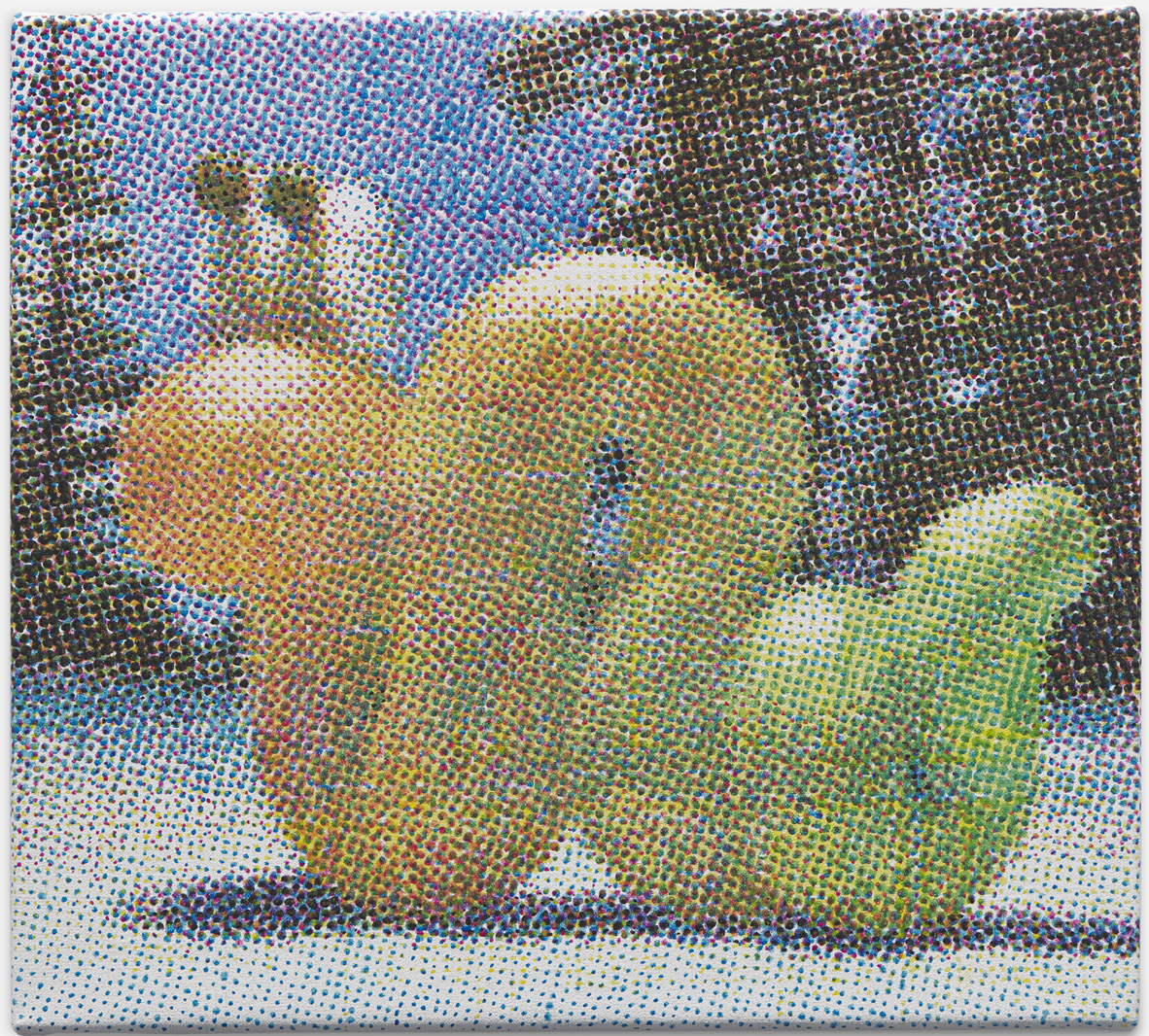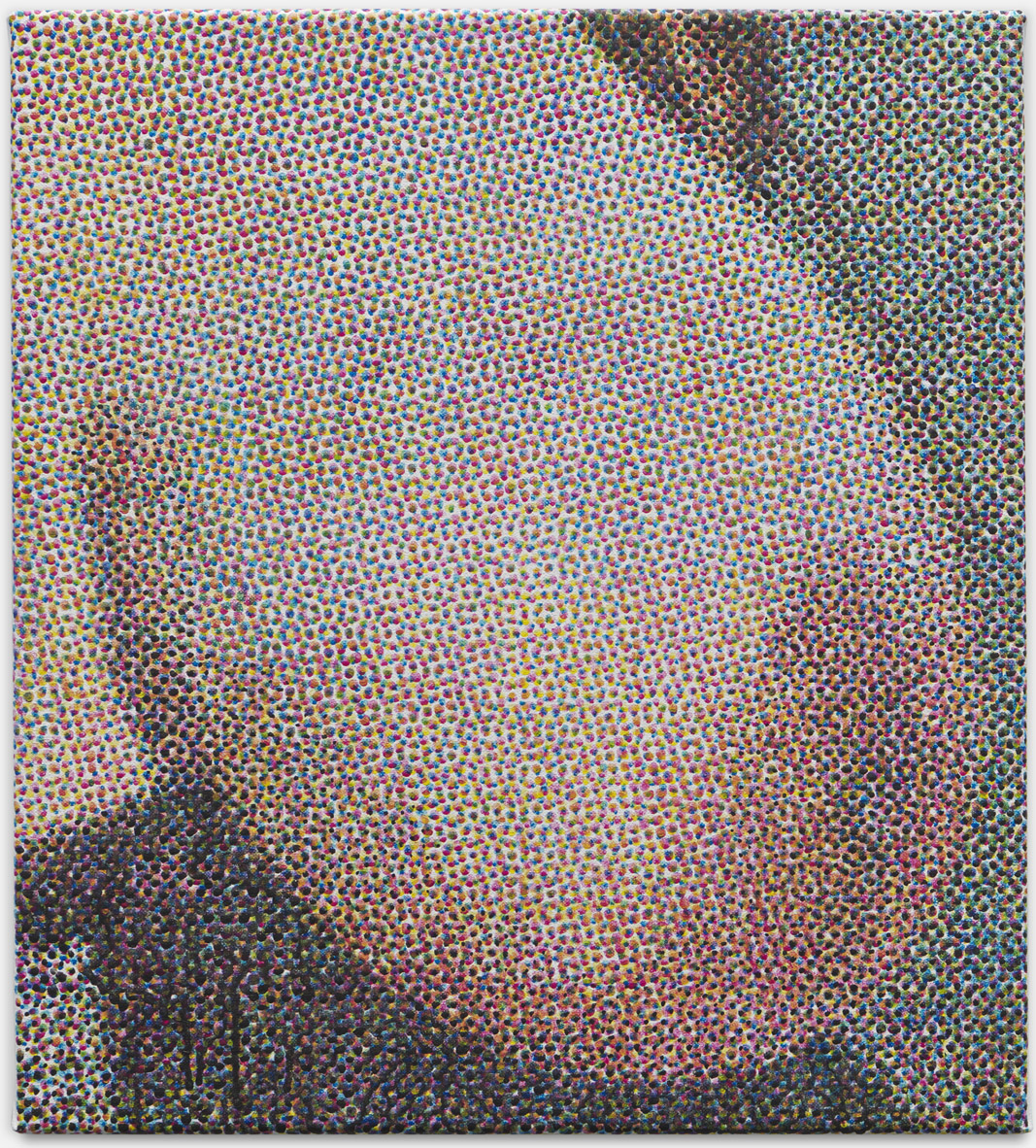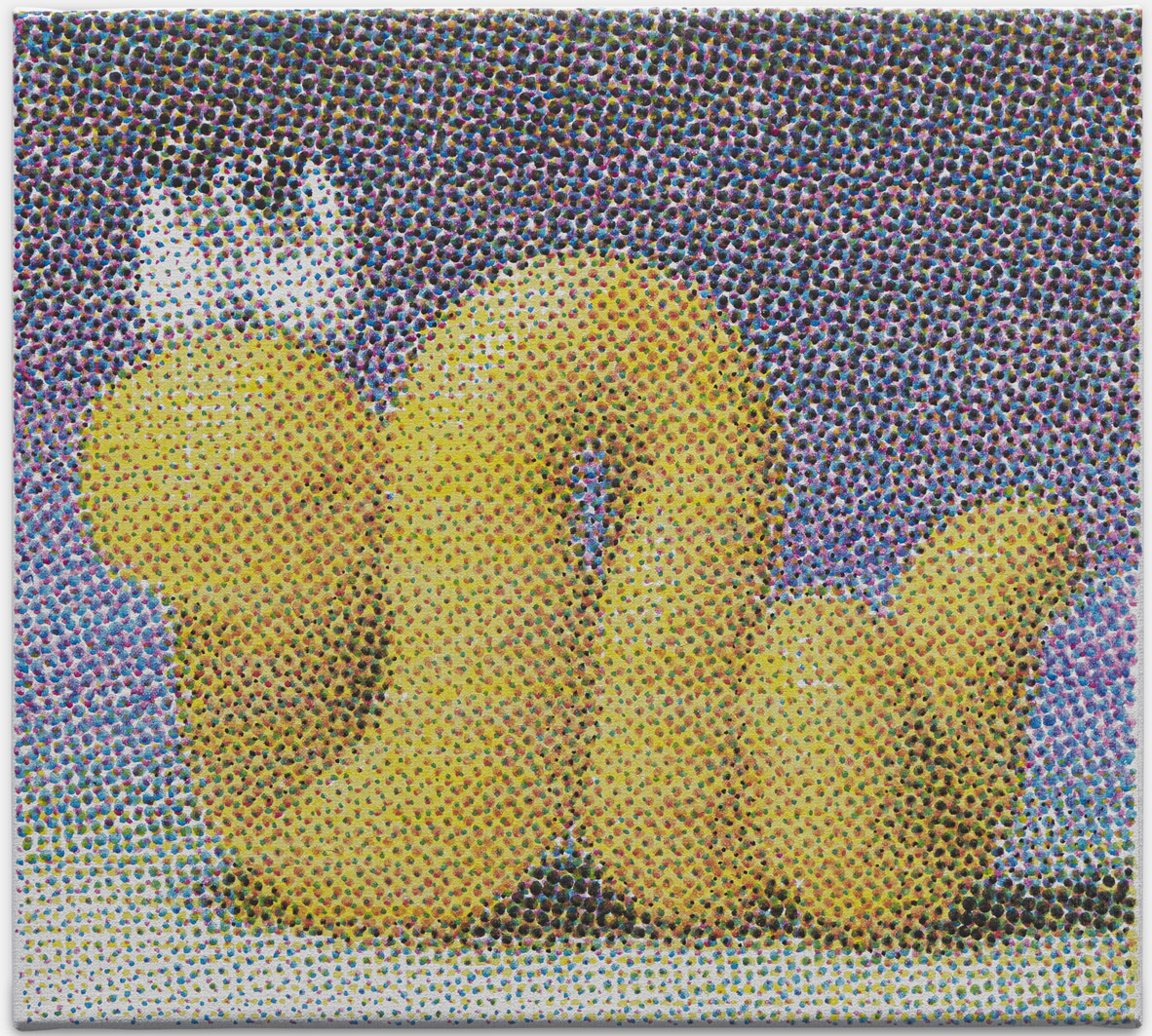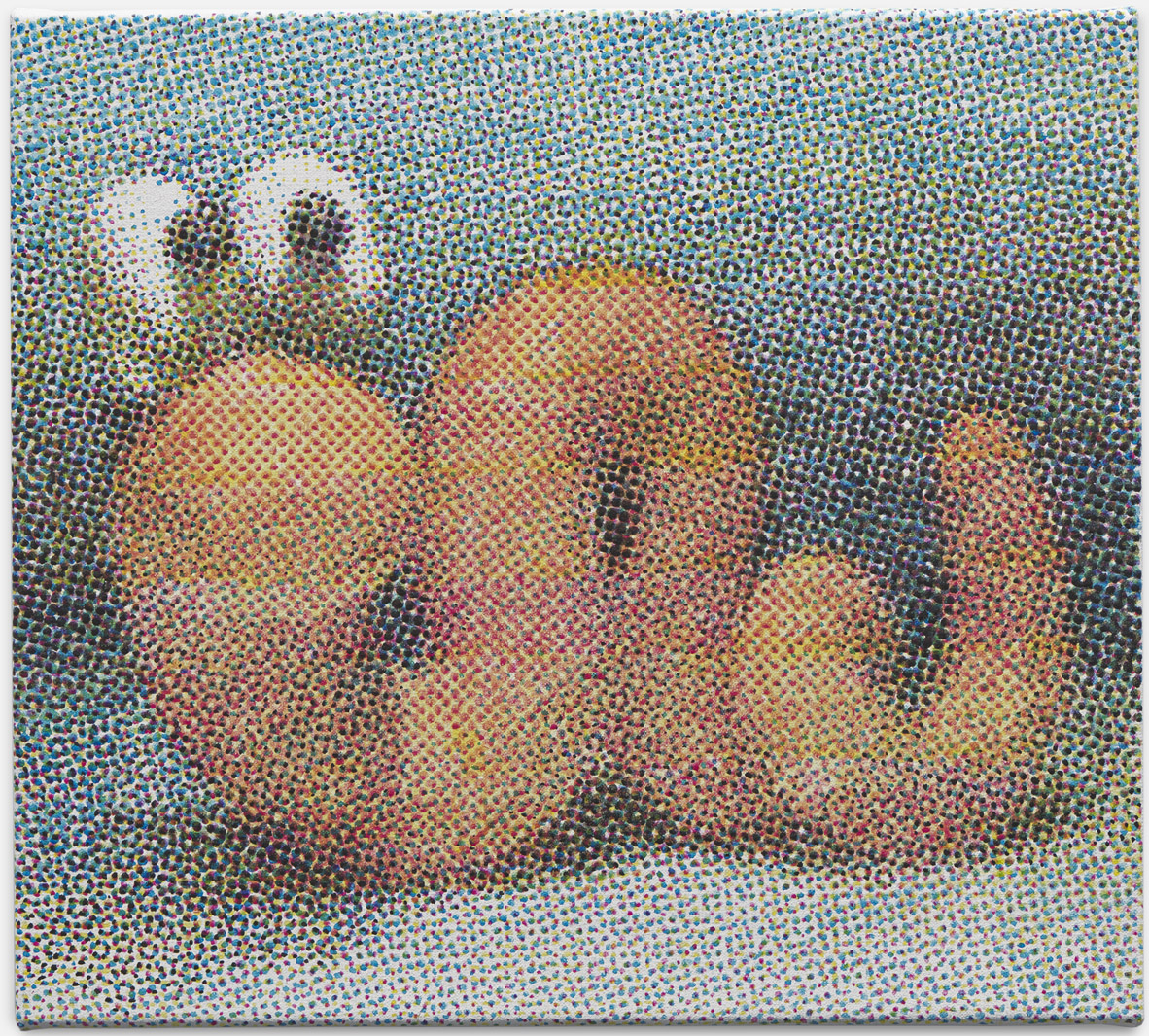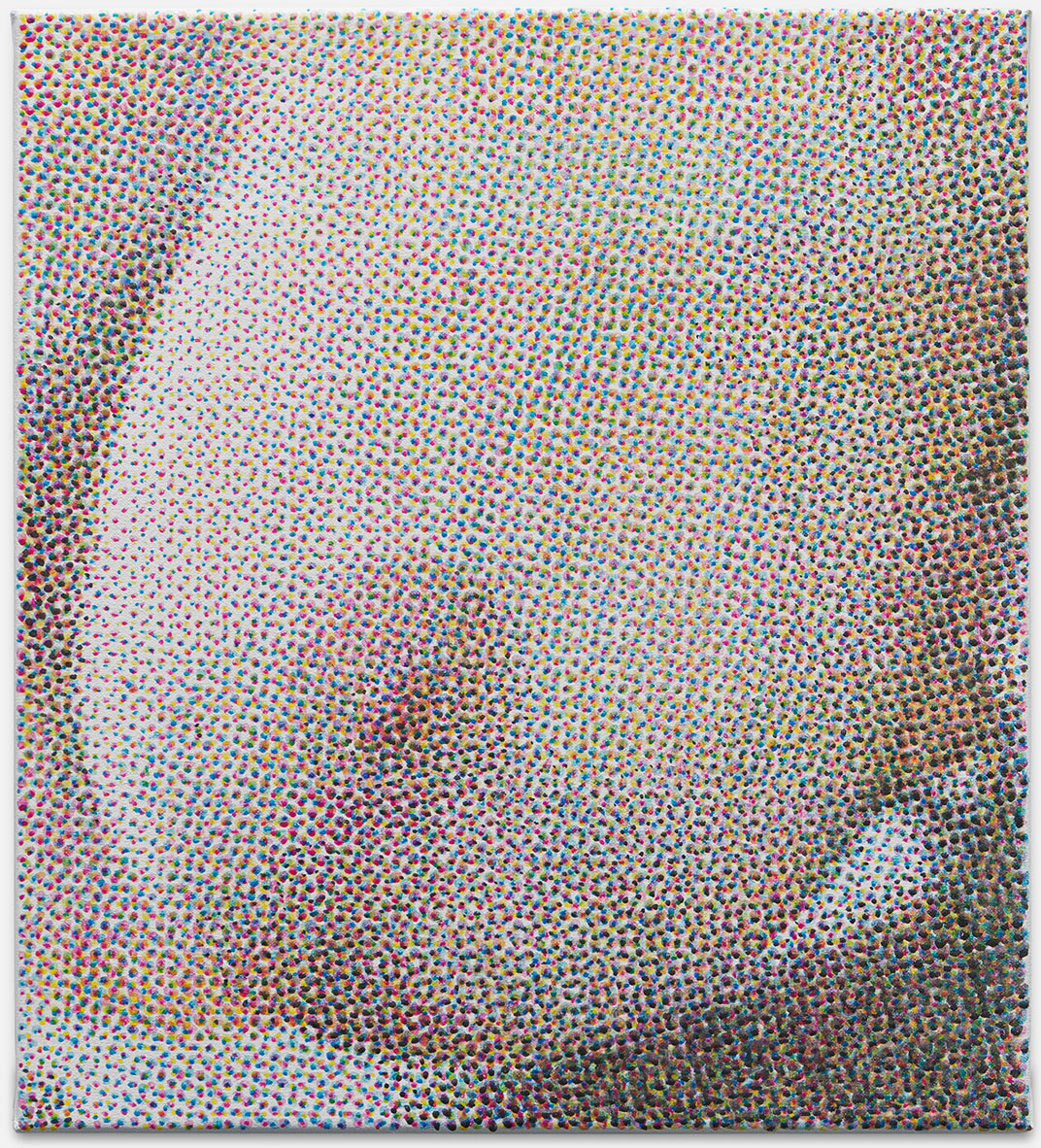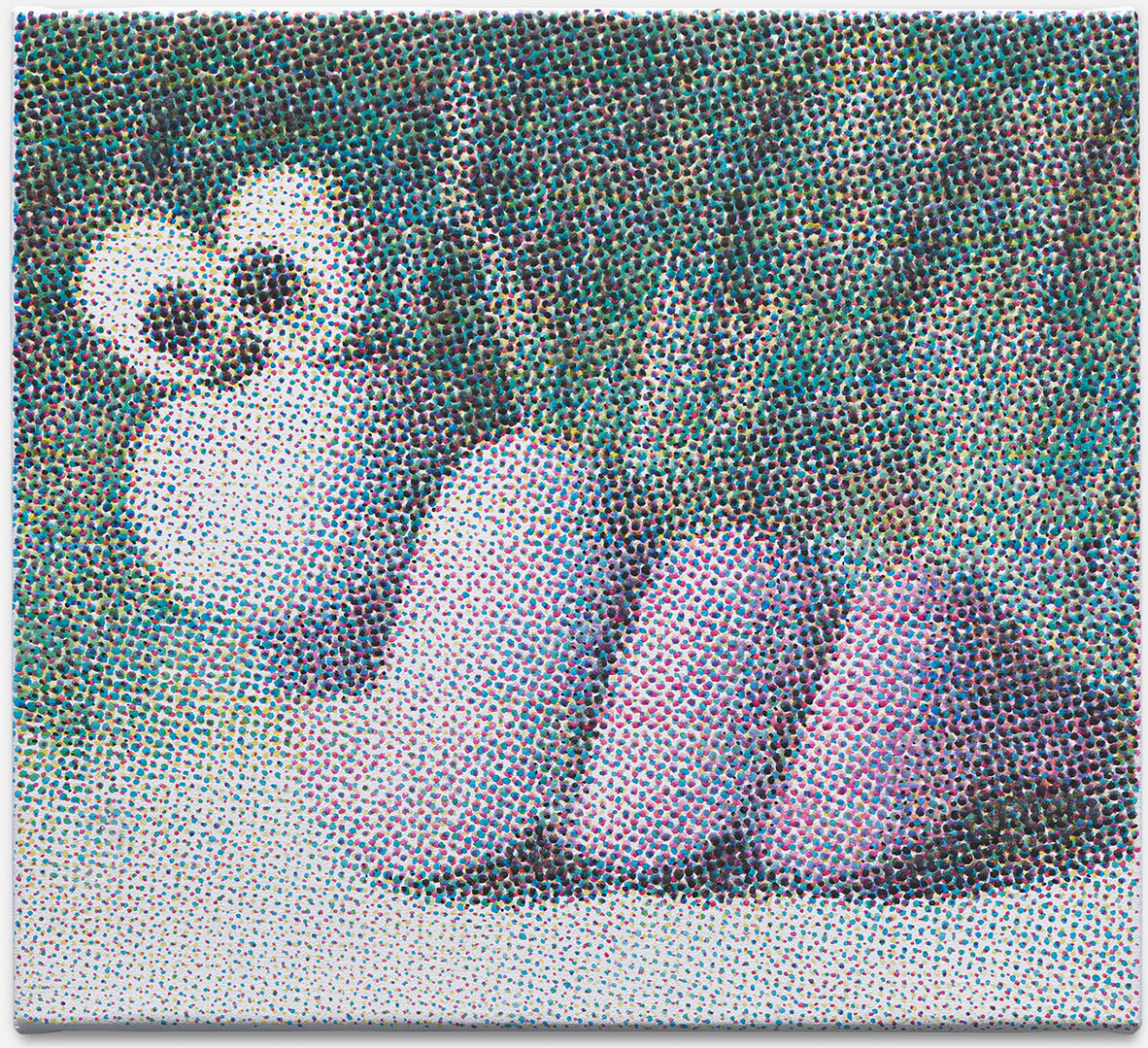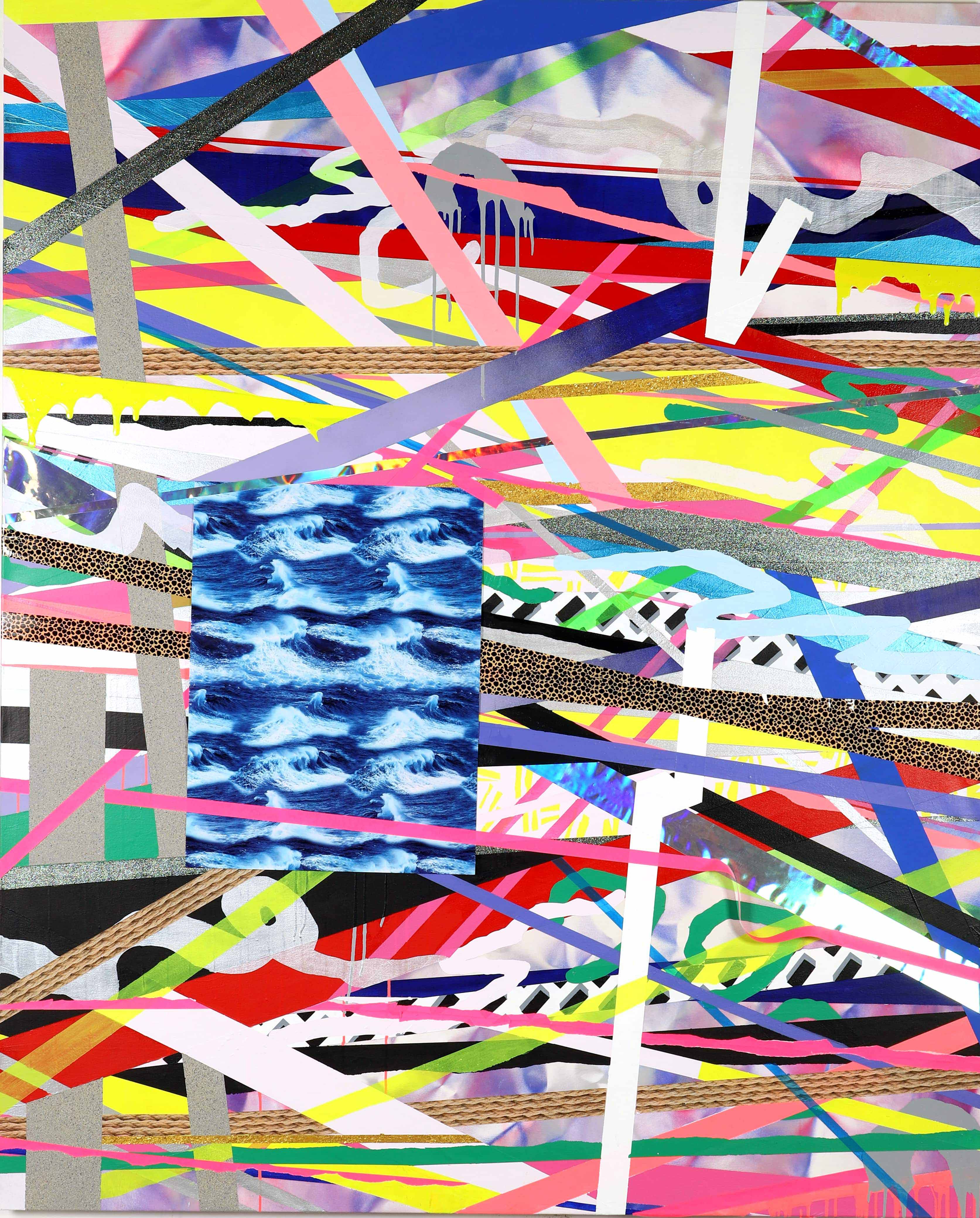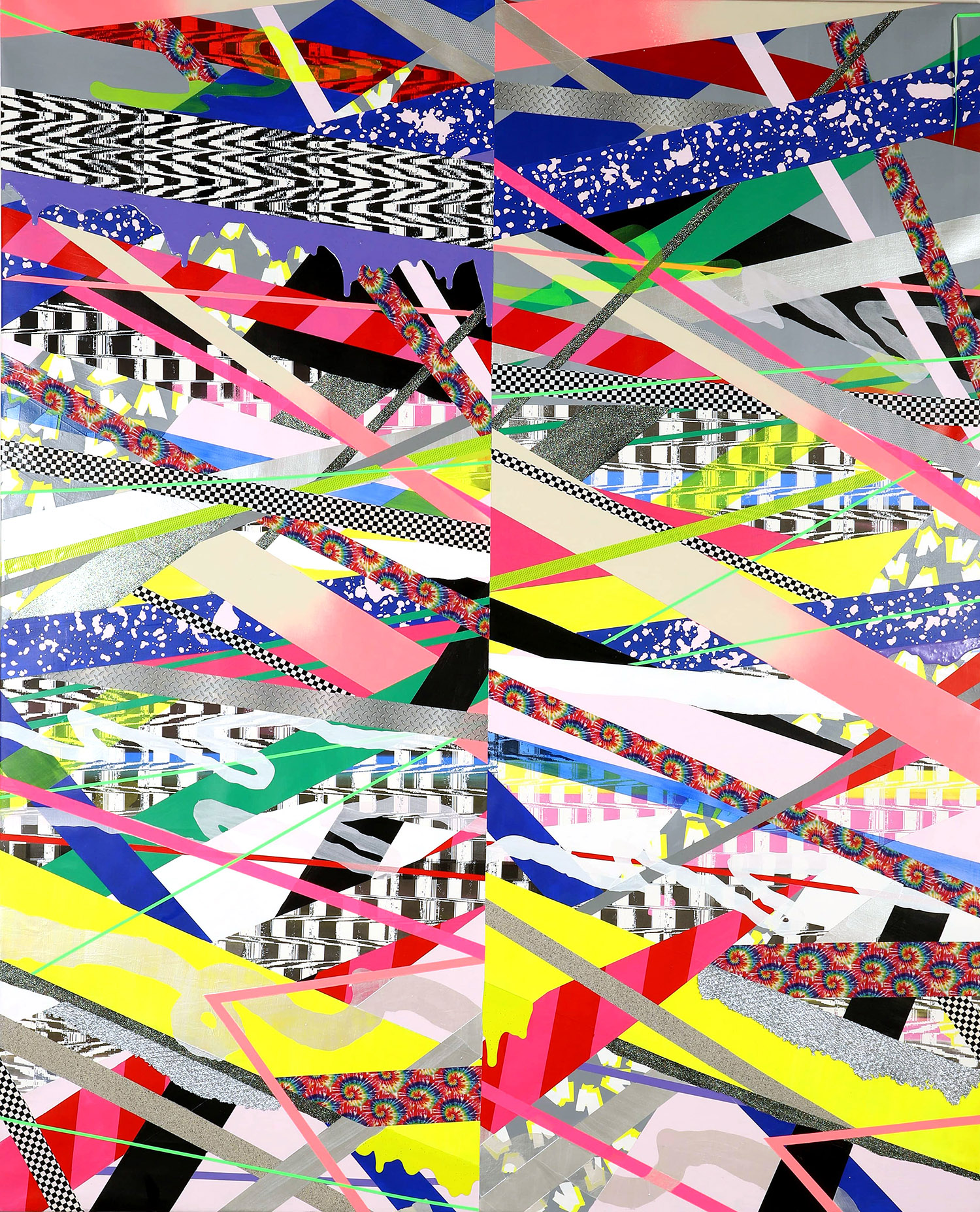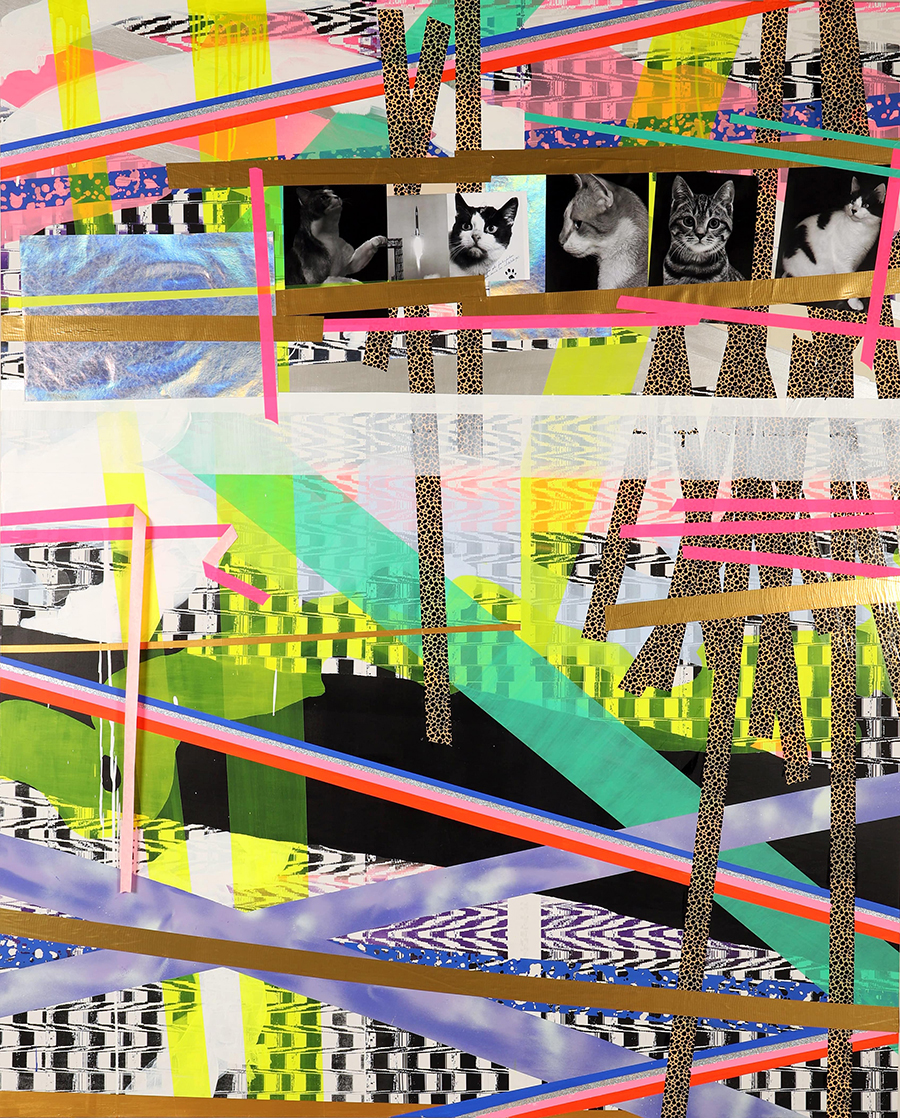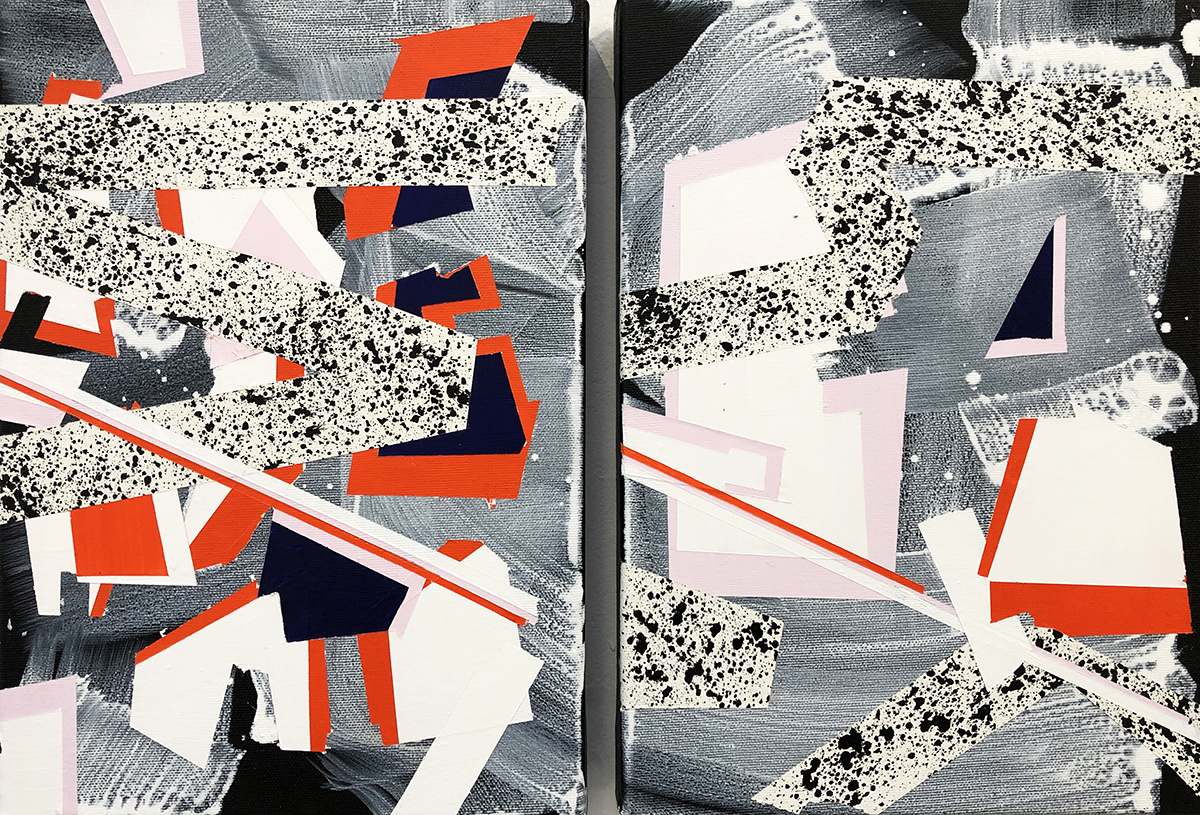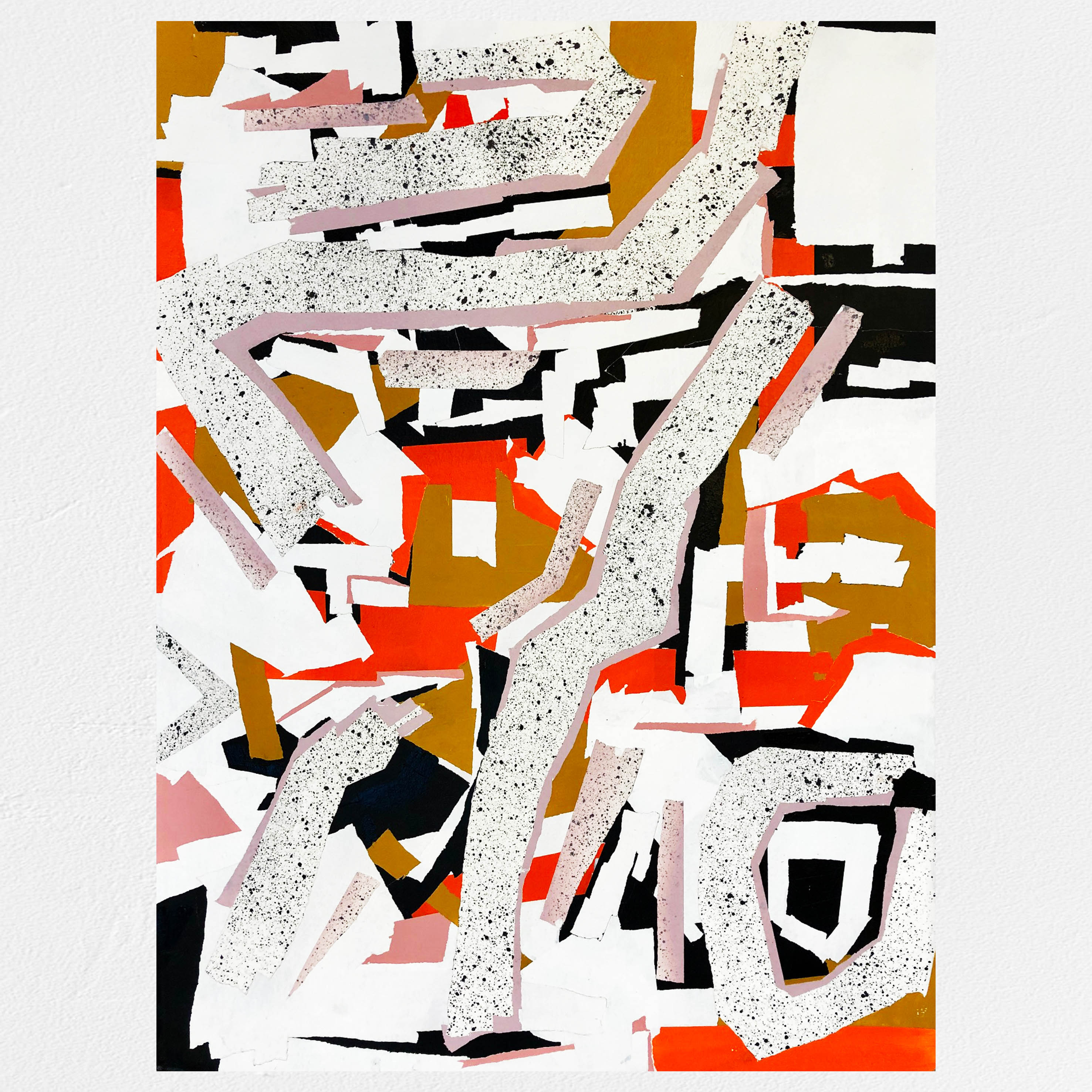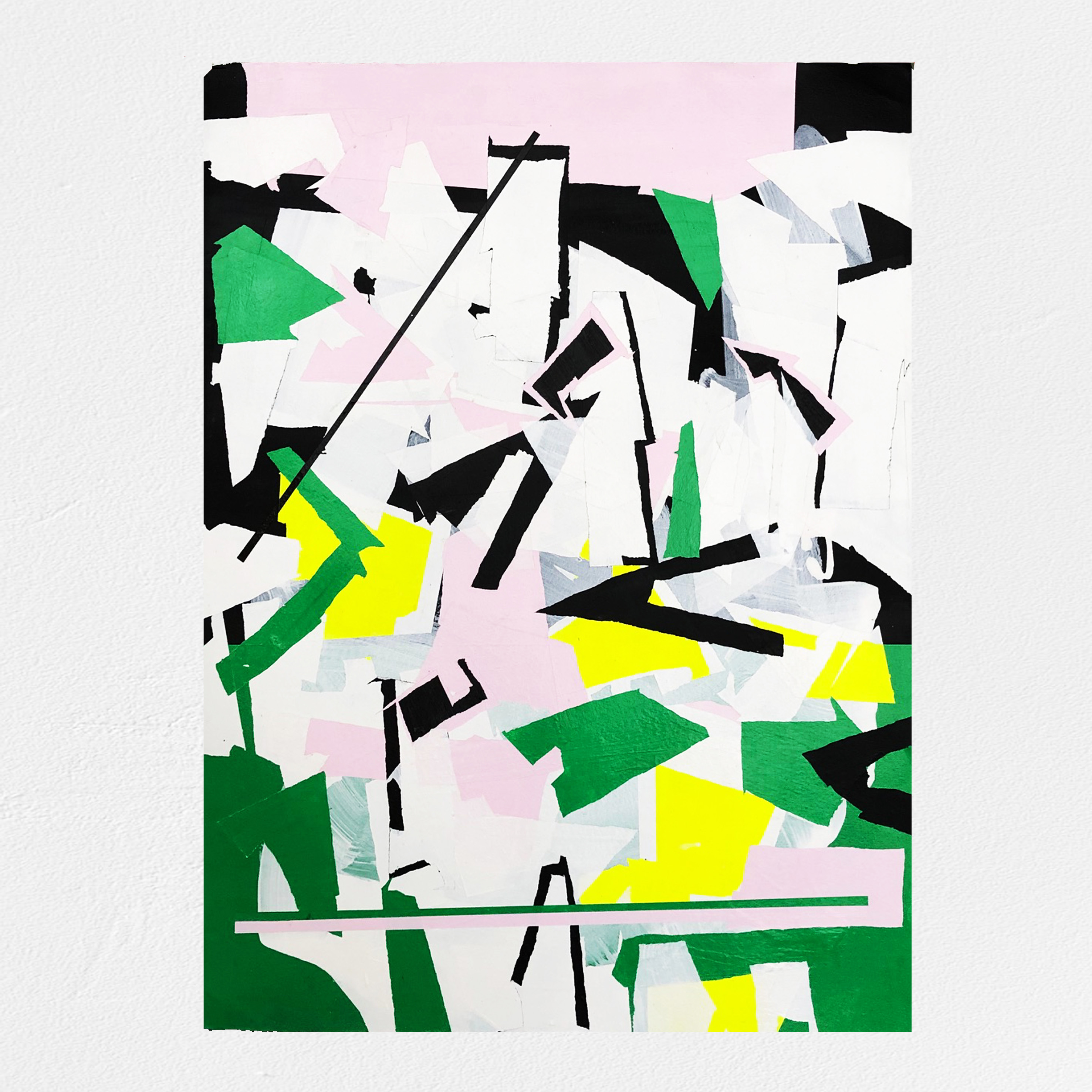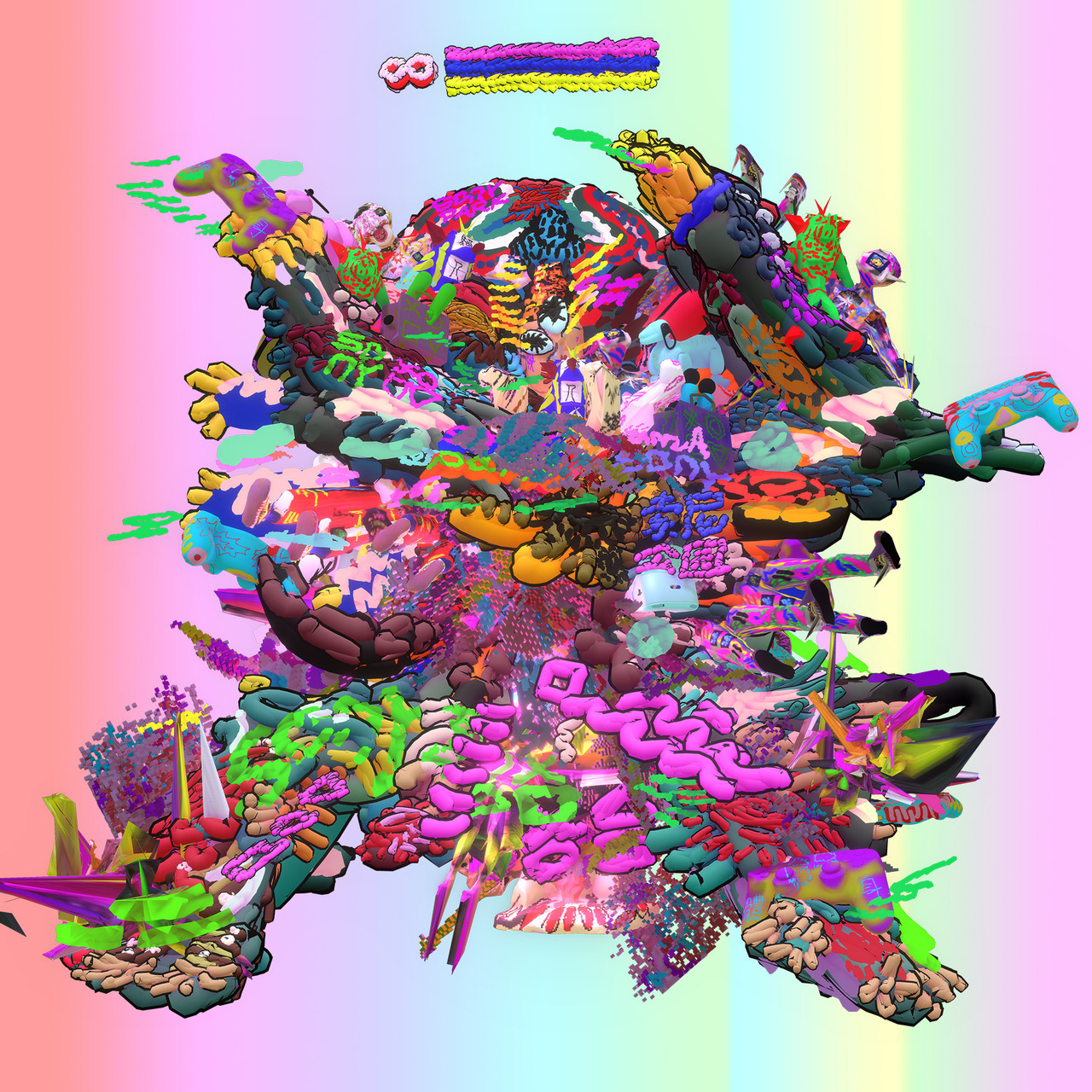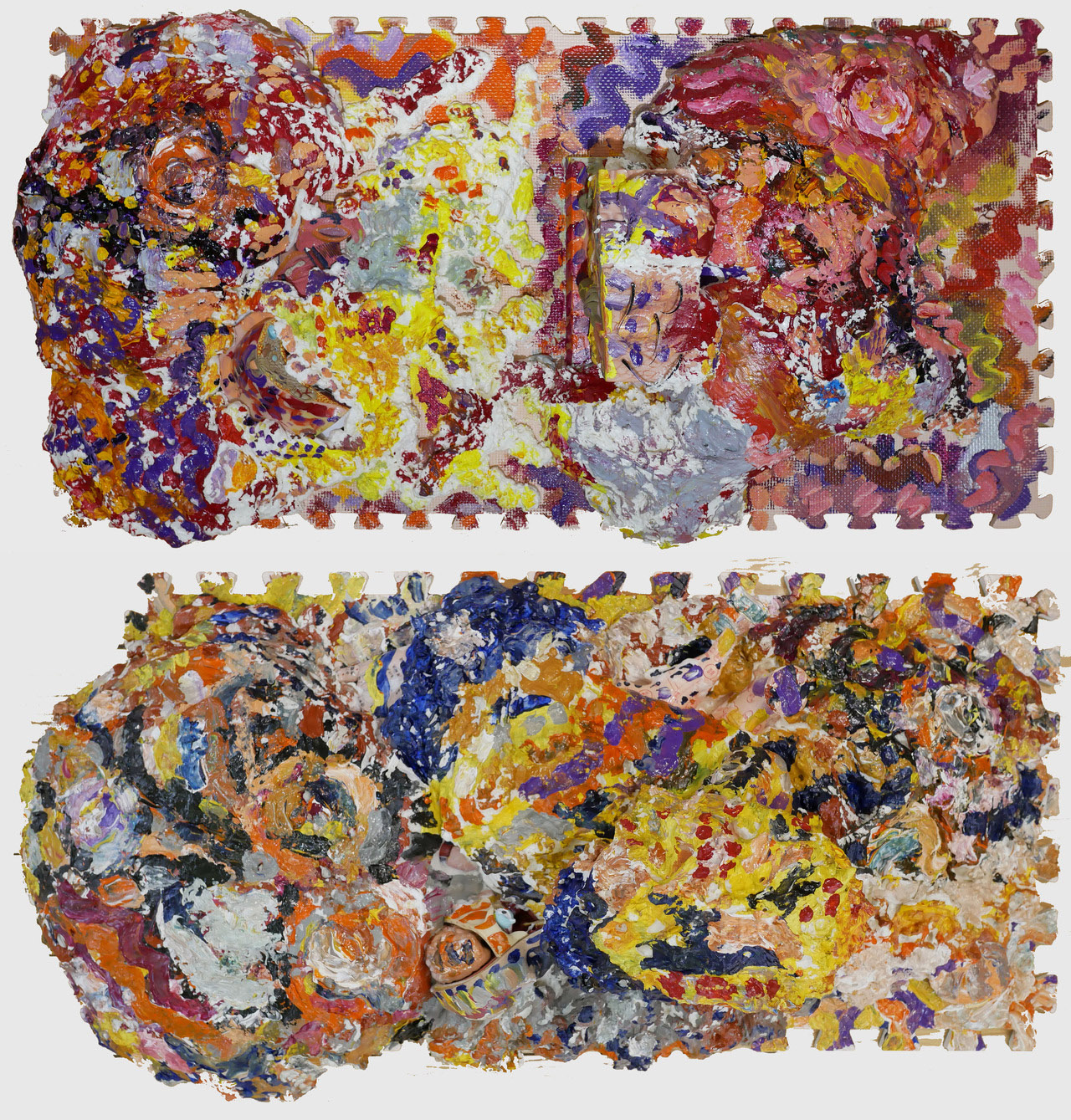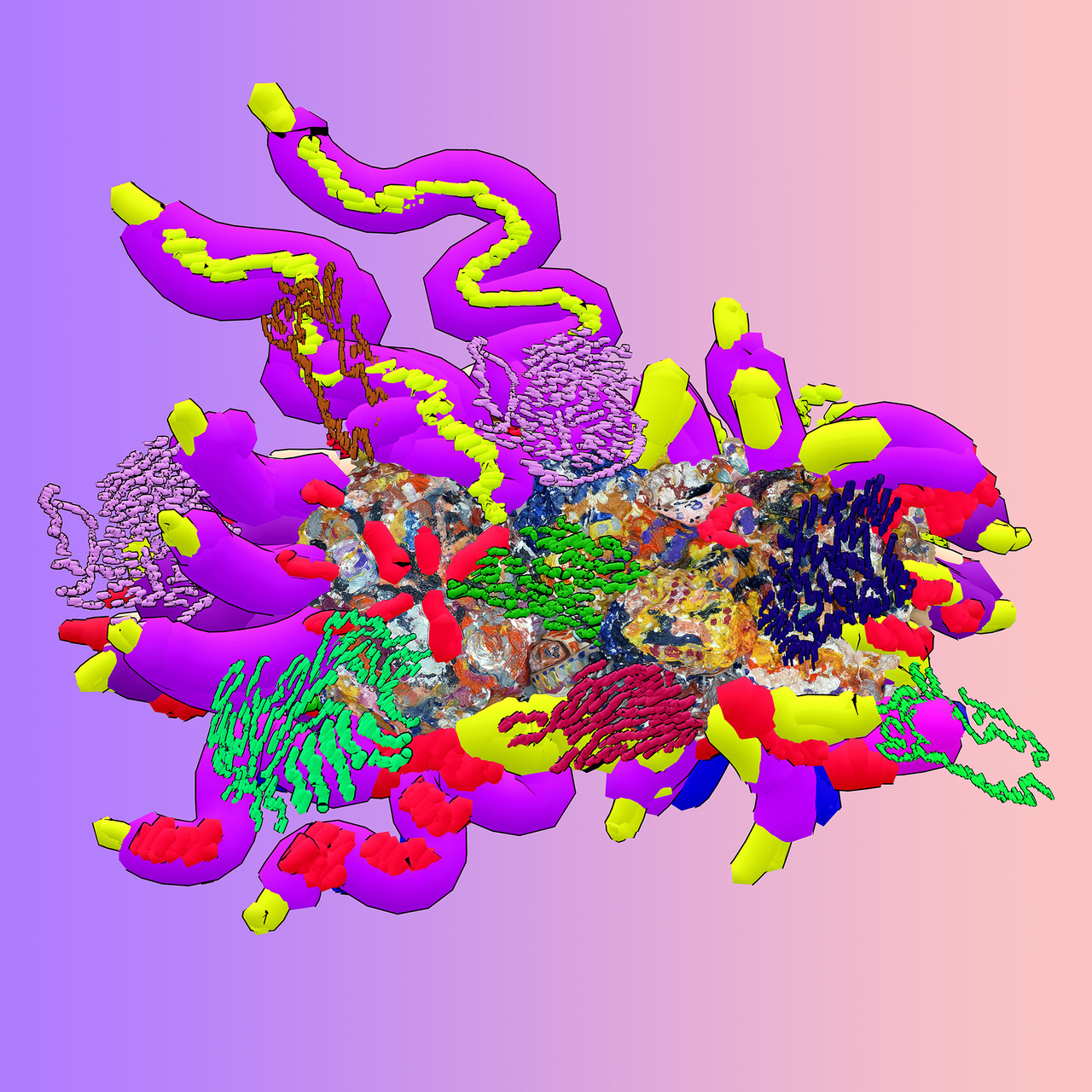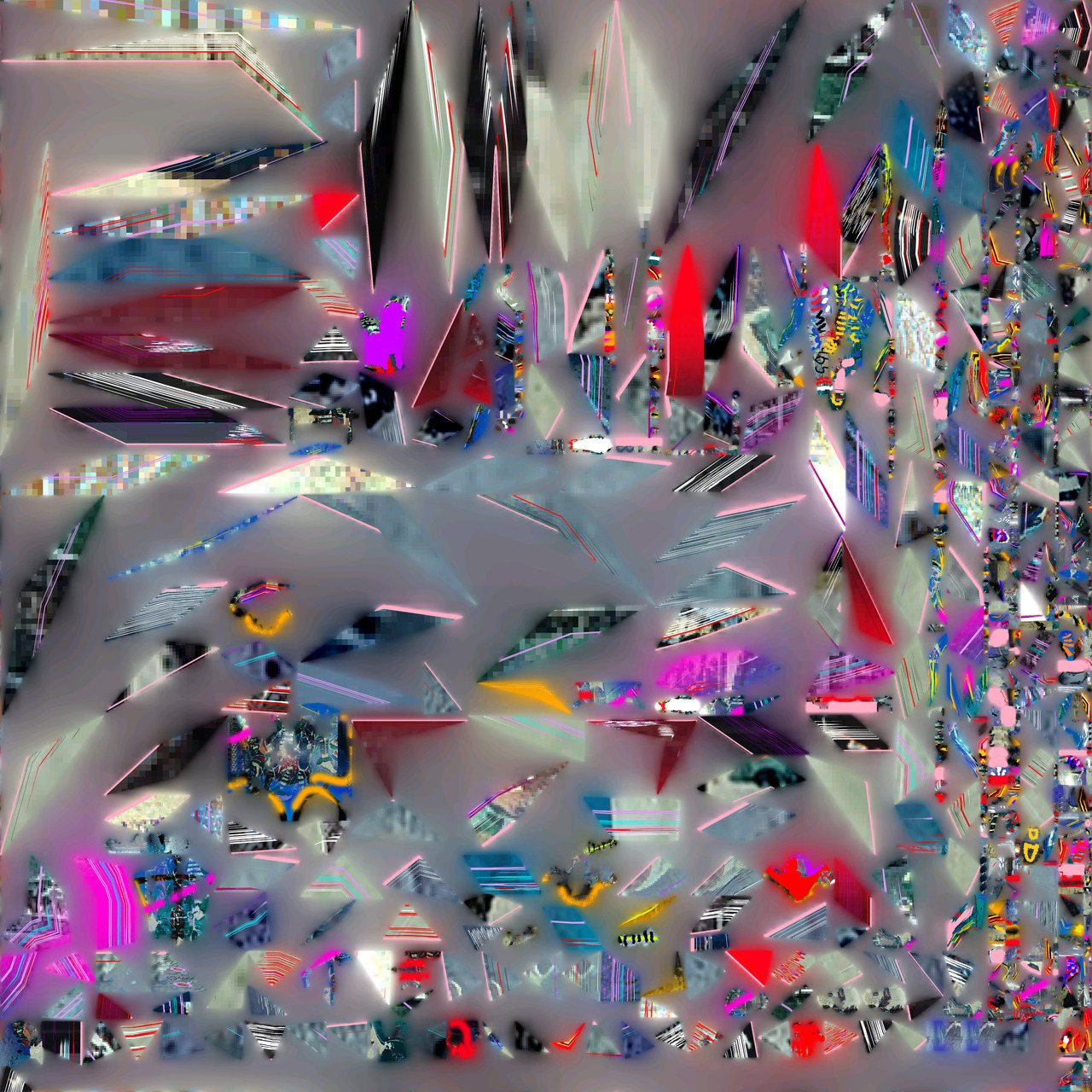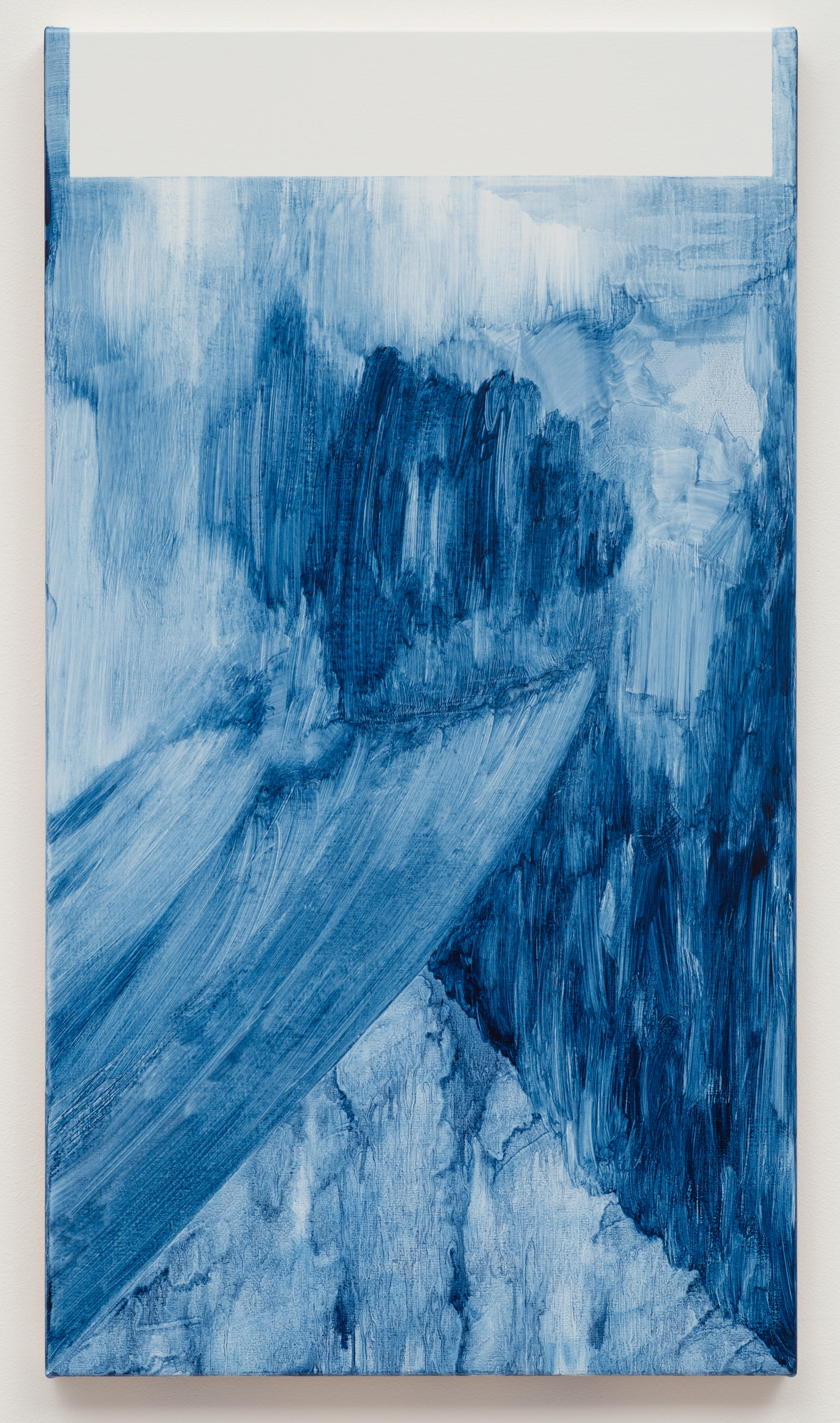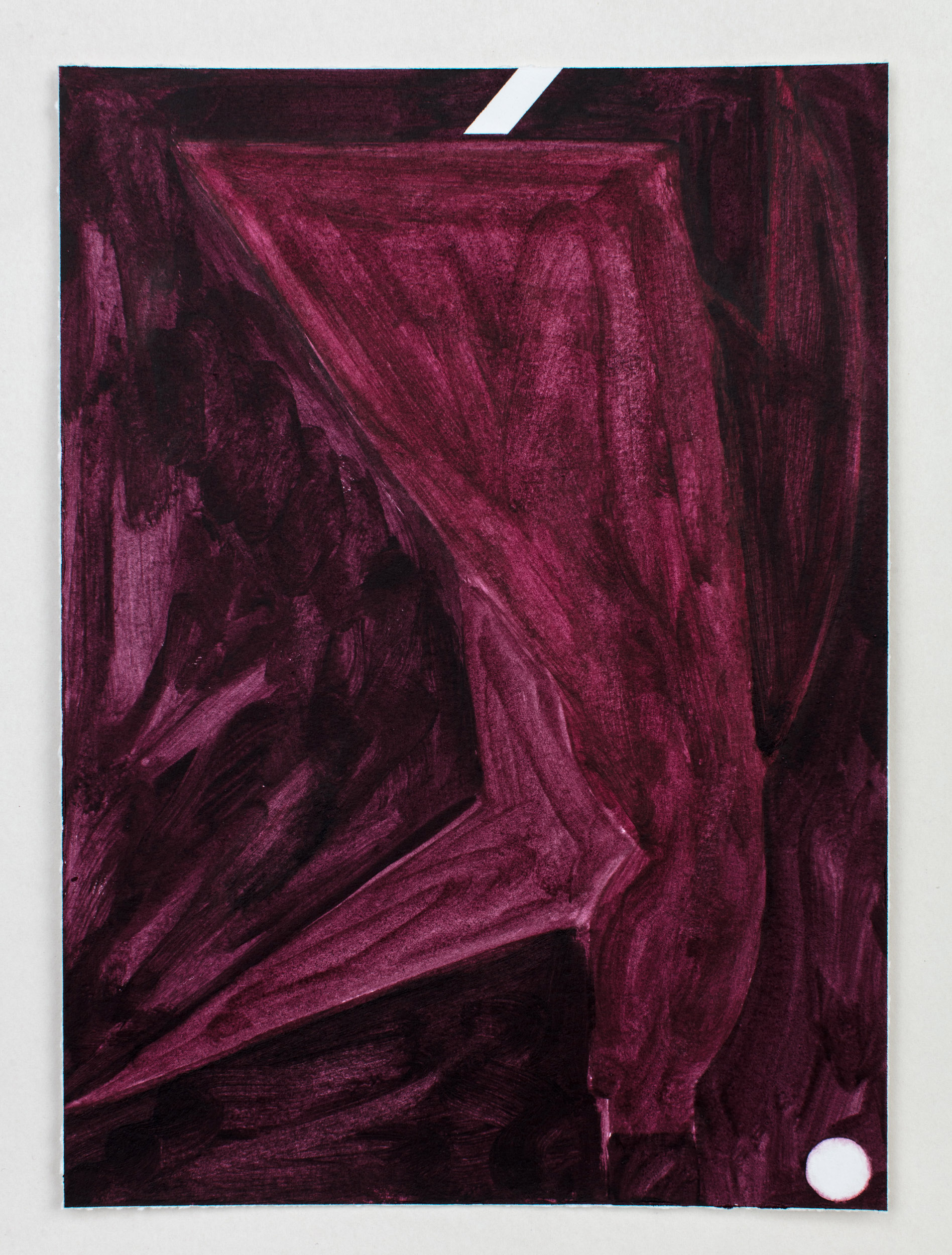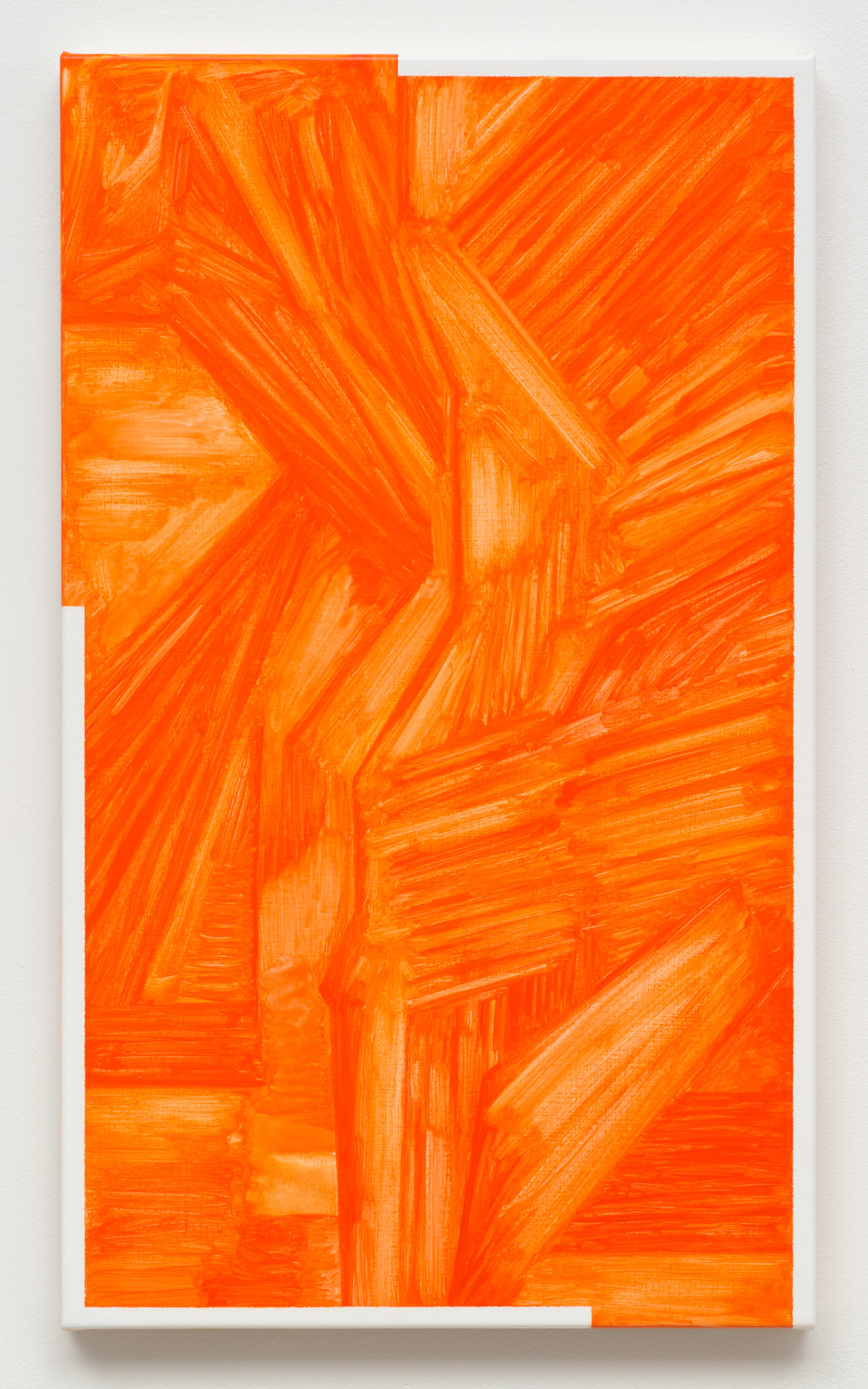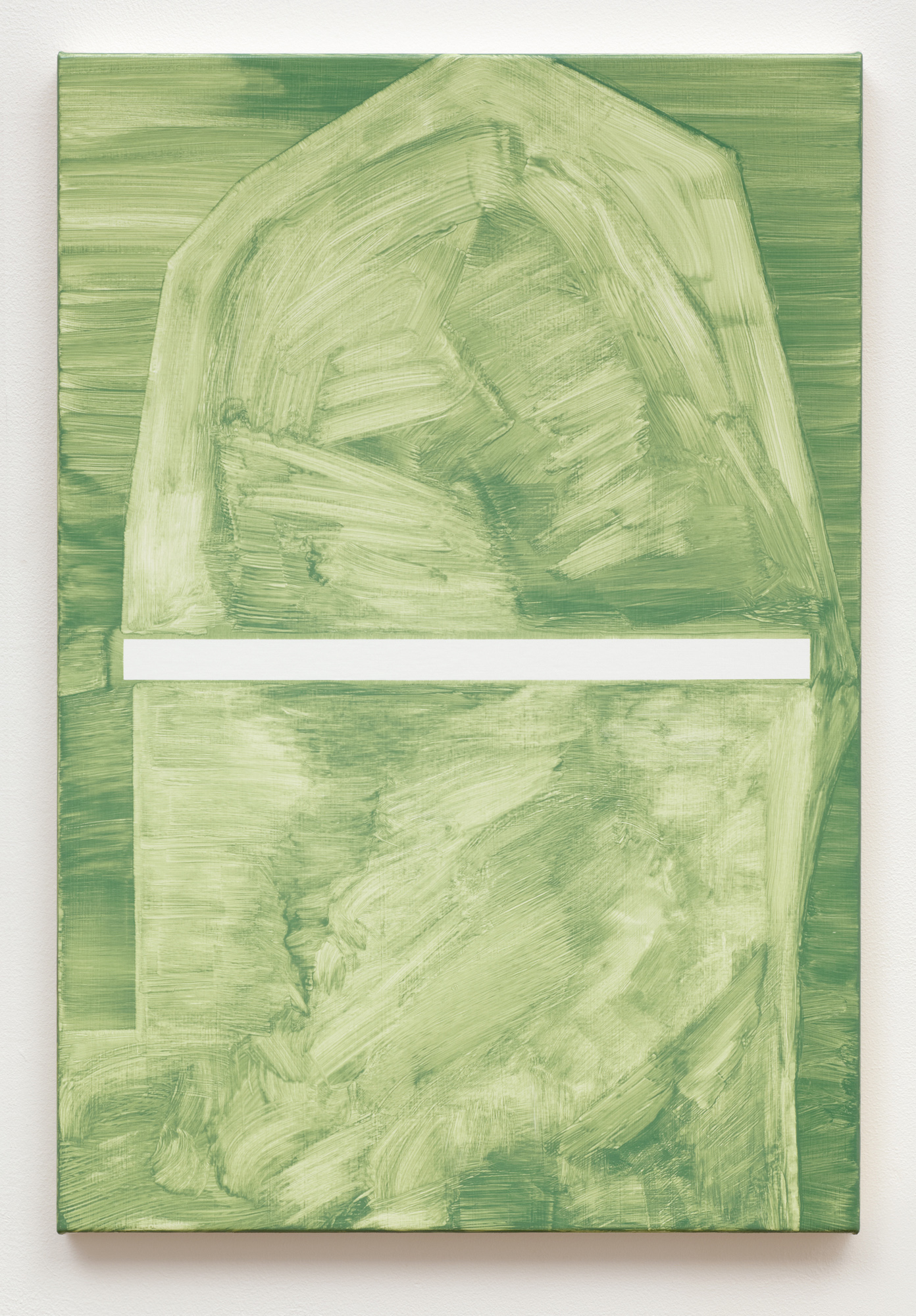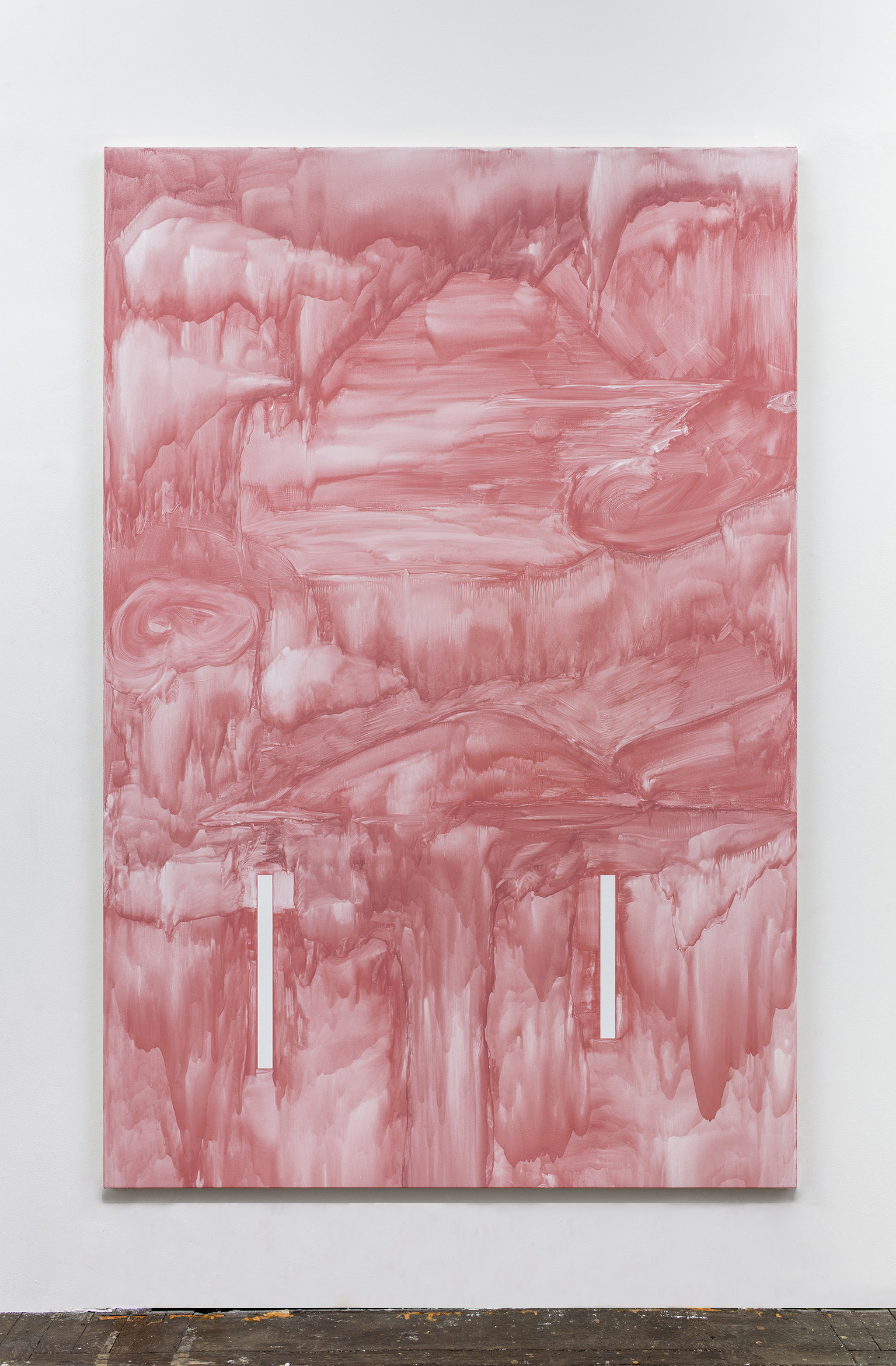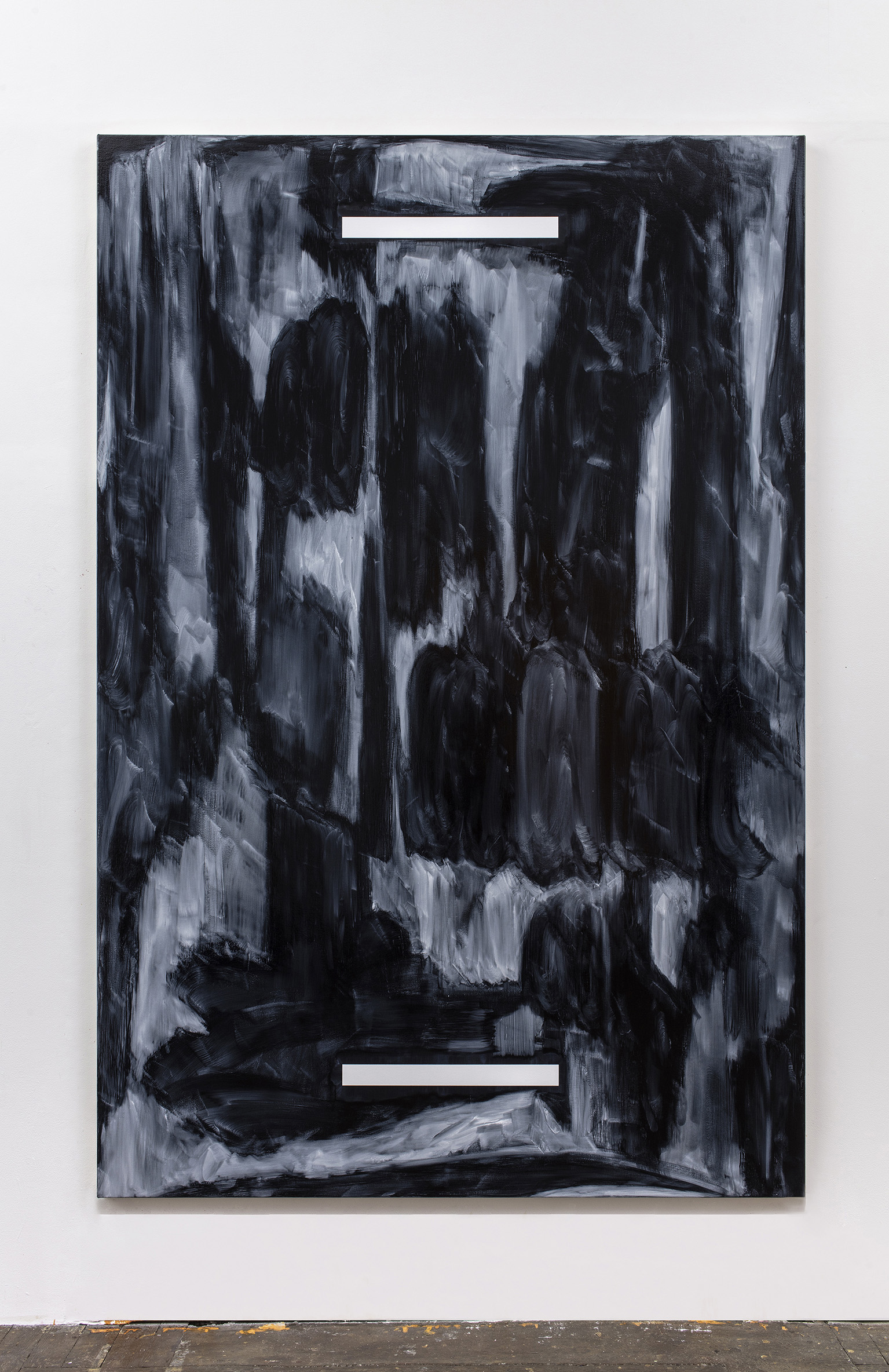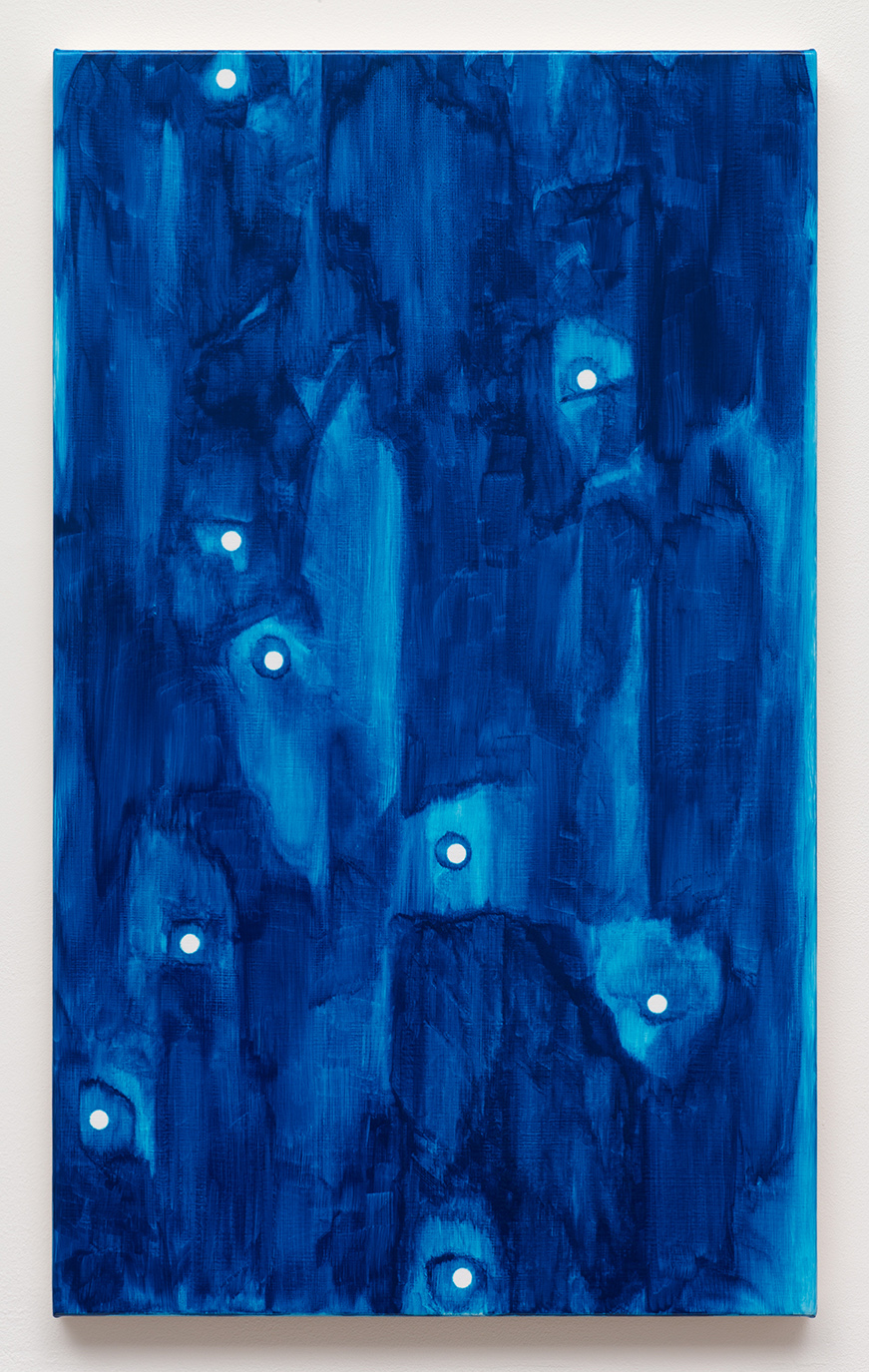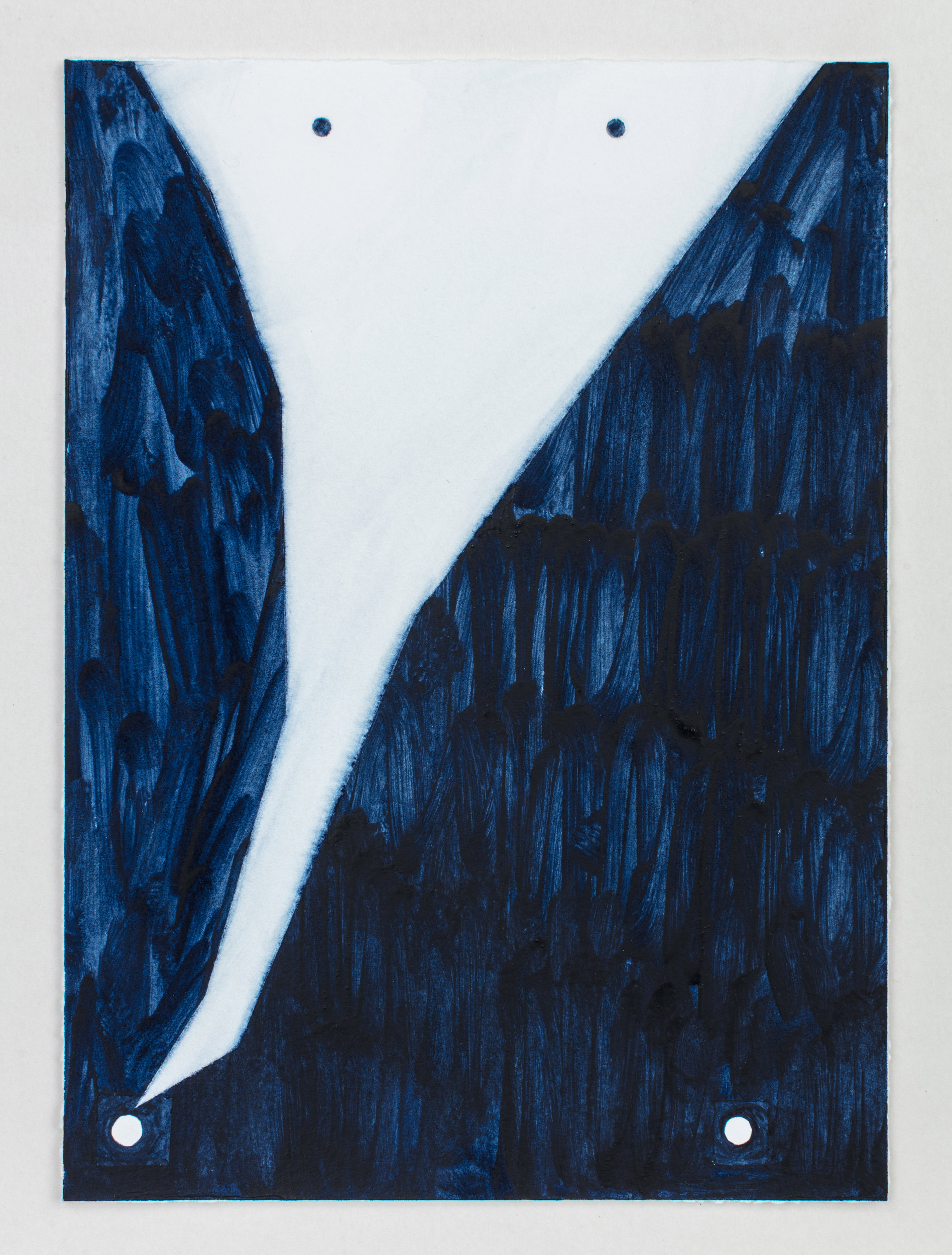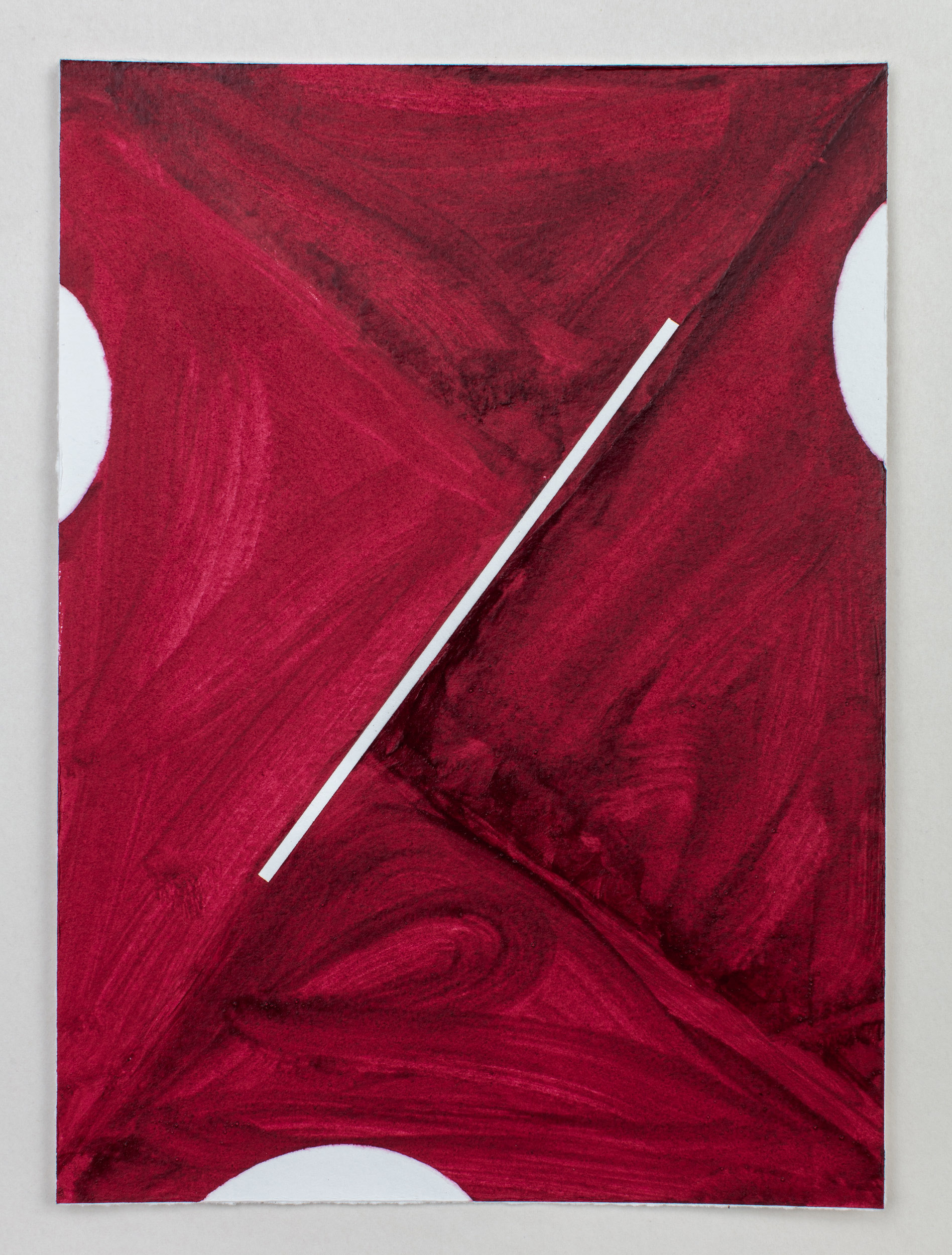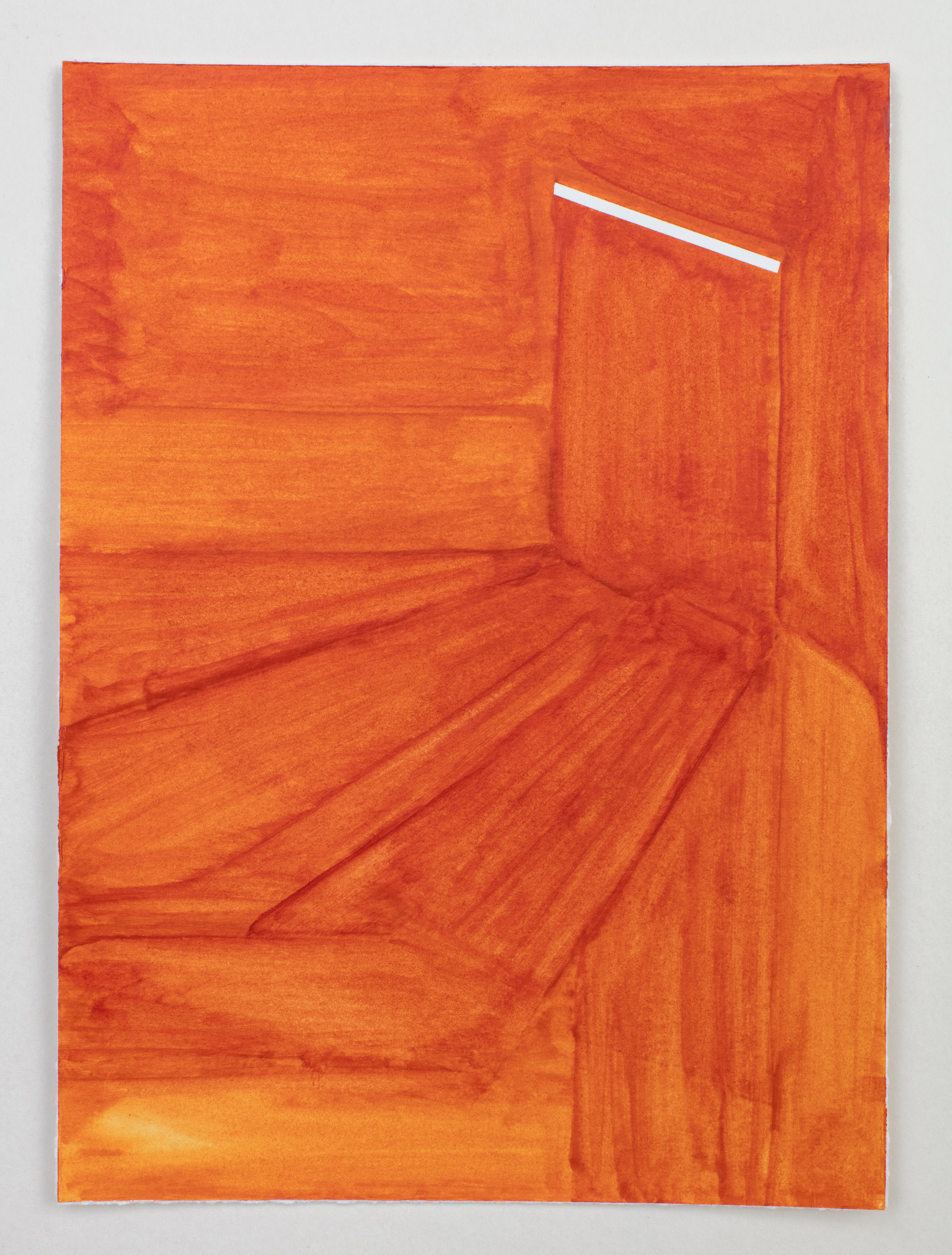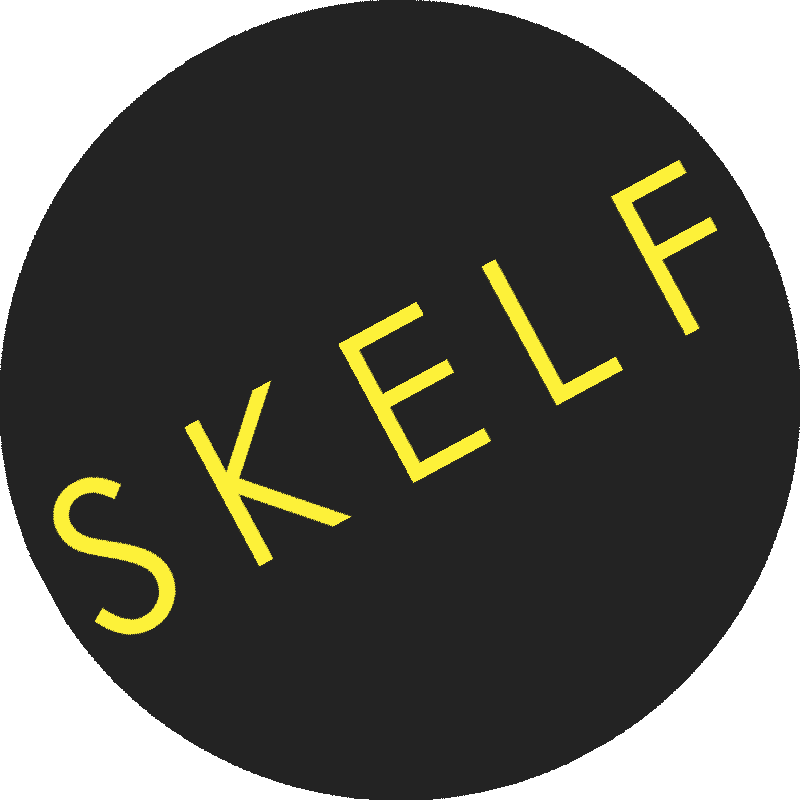Al Dente by John Walter
17th April - 16th July 2019
Al Dente is an exhibition about how artists edit their work. The idea for the project has grown out of Shonky: The Aesthetics of Awkwardness an exhibition that I curated for Hayward Gallery Touring Exhibitions. In the catalogue essay I described Louise Fishman’s paintings as “firm to the bite”. Her paintings are not overcooked but neither are they raw or unfinished. So what are they then? What is this quality of freshness they have? They are al dente. This exhibition seeks to further explore the al dente analogy in painting, sculpture and Virtual Reality through conversations with artists Anna Brass, Dominic Dispirito, Edward Kay, Diana Taylor, Jiadong (Pete) Qiang, Michal Raz and Robert Holyhead. In wide ranging conversations we talk about editing as well as the intellectual and craft processes involved in making art, which are rarely documented. Recorded and shared here, with minimal editing, the conversational dead ends reveal as much about us as artists as the passages that flow.
In culinary terms, al dente is used to describe the optimal conditions for cooking, serving and eating pasta. This is a cultural construct – a hierarchy that has evolved over time in order to distinguish right and wrong among pasta cooks. Equivalent cultures of taste and behaviour have been constructed in the art world over time and so Al Dente addresses how artists embrace or challenge the thresholds that they are presented with or have created for themselves in their work. Discussions about patterns abound in the conversations that form Al Dente – patterns in Gothic Revival, sewing and also behaviour and how one can trick oneself out of one’s habits. What emerged for me during the course of curating the exhibition was an understanding that the al dente courts being underdone as opposed to being abandoned. The al dente is the offspring of the unfinished but it is distinct from it.
I began by considering this distinction between the al dente and the unfinished in relation to my own artistic practice. A good example of this is a recent series of 20 paintings (working title Brexit Gothic) that I began in May 2018 by laying down coloured grounds and painting a different image on each canvas traced from a projection. These initial painting statements were fresh and unfussy but they were not complete. I knew that I wasn’t going to act on these painting immediately or react to the initial statement. Instead I left the paintings for approximately nine months knowing that I would subsequently return to them and resolve them but not knowing how or when. Other projects came and went and my frame of reference shifted. This is key to my notion of the al dente – that time becomes an editing tool. I returned to the series in January 2019 and resolved them by painting a different Gothic Revival pattern by Augustus Pugin on each as a background – again traced from a projection. The means were similar in both painting sessions but the mentality was different as was the imagery.
This juxtaposition in time is a good starting point for thinking about what al dente is in art making. The process of looking at one’s initial statements – painted, drawn, written, filmed, photographed, sculpted or other – and getting used to them, adjusting to them under different temporal, intellectual, critical, historical and emotional circumstances – and then intervening in them once a shift has occurred is core to the al dente methodology. Certain disciplines are more familiar with this way of working than others. Music has the demo tape, which is not intended to be the final form but is always available to be used for that purpose if deemed fit (see Kate Bush’s King of the Mountain). Writers sometimes speak of shelving a script or draft and returning to it refreshed. Effectively this shelving process can be thought of in terms of another cooking analogy – that of proving in baking – resting the artwork and allowing the freshness of the gestures to take on new meaning when they are viewed afresh at a later date.
I selected the artists for Al Dente for very different reasons:
I met Anna Brass on a recent visit to The British School at Rome where she is the current Sainsbury Scholar. Her studio is a treasure trove of architectural maquettes and dexterous sculptural tests that are full of elegant observations and pictorial humour. Her work gets straight to the point – not in a blunt or coarse way but in a shonky way. Her work is al dente in the sense that it begins as diagram or sketch with the intention of being rendered in greater detail but then a critical decision is made that the sketch form is enough or better than the full form. I should have recorded the conversation we had in Rome but I wasn’t quick enough to think of it so we spoke over Skype a week or so later when I returned to London.
I saw Dominic Dispirito’s Masters Degree show at The Slade two years ago and was struck by the scale, confidence and humour of his work. I’ve been following him ever since and we’ve visited each others’ studios. This time when I visited Dominic at his studio in Dalston I found his work proliferating in many directions away from where I had first found it, encapsulating different historical styles and approaches to painting in order to expand his pictorial domain. One of the most important parts of our conversation for me was our discussion about “setting up an image” within which to paint by making a drawing first. In this sense Dominic encapsulates something consistent to all the artists in al dente that they are performers of images. Dominic’s relationship to drawing allows his painting to remain al dente. If a painting fails he has to perform it again.
My conversation with Edward Kay took place in the foyer of the National Theatre during a production of Follies – so I must apologise for all the background noise. We talked about how “navigating the shortcomings of what you’re doing… makes you do different things” and how the al dente can involve making something look “charmingly shit”. I studied with Edward at the Ruskin School of Drawing and Fine Art in Oxford twenty years ago and we have had an ongoing conversation about painting ever since that has informed the development and execution of this project. During 2018 we talked a lot about Canaletto – an artist Edward had long been obsessed with but whom I had never understood. I began to understand and even enjoy Canaletto’s paintings through Edward’s eyes; painting, drawing and writing are merged in Canaletto’s paintings. The dog, the boat and the figure are like ideograms that are rendered identically from one painting to the next. Canaletto performs the picture-words that he paints and this process of rendition charges the images up with a frequency and an energy that is communicated to the viewer. The same goes for Edward’s work. His work is a research into painting as something that is in front of you and in your imagination at the same time; it’s in the present and the past at the same time, a relic of a set of relationships. During our conversation Edward noted that Canaletto’s paintings of the city feed back into how we see the city and then subsequently go on to design it with its pictorial representation in mind. This is a reminder of how vital and political picture making is. We arrived at the idea of the “painting reader” – someone who sees the world as and through painting.
I visited Diana Taylor at her studio near Victoria Park. I’ve known Diana and her work for almost ten years. Recently her research at the intersection of painting, weaving and printmaking has shifted and this formed the basis of our conversation. Her work is a compression of time using fragments of history and picture making. What seems to have driven innovations in her recent work is the expansion in her repertoire of grids and devices for joining fragments together into larger wholes using digital scanning, digital weaving and other processes. She describes her work during the conversation as “a series of unfinished ideas that all talk about the cloth”. Her studio is a repository of her own unfinished work – or revisited work – into, onto and within which she intervenes with ever more complex pictorial strategies. What impresses me most about Diana’s work, as someone who paints, is how she makes a virtue of pentimenti (the ghost of a previous layer of paint showing through in the current layer, often as texture) – she is winning the battle on this front and this is her version of al dente.
I met Pete (Jiadong) when he was a student at the Architectural Association. His work is a hybrid of architectural space and painting, the container for which is often Virtual Reality. We talked over Skype and FaceTime while he is in Beijing. The connection was poor so we stop and start a few times. I have learned a lot from Pete about how to test the limits of pictorial space by working between the digital and the analogue and how moving between the two realms can inform one another. To my mind Pete is at the cutting edge of negotiating the solipsism of VR immersion and installation. The conversation with Pete sheds light on how the al dente operates in digital space. Unlike analogue painting the digital has a way of removing history without a trace. Therefore allowing for the digital al dente can involve layers of digital palimpsest building up – a kind of “showing your working” in Tilt Brush.
Michal Raz is also winning the battle on the pentimenti front but in a very different way to Diana Taylor. Her paintings deliberately confuse the distinction between masking and taped painting with actual tape that is collaged onto the painting along with silkscreen and other forms of pattern making. Texture becomes a vital aspect of the pictorial field for Michal in a way that for other artists it would be a sign of failure. This hierarchical inversion of what pentimenti means within her painting is emblematic of the al dente. Michal’s work suggests new possibilities for me in my own work for how to “make good” of texture and trace, which could be very liberating. When I visited Michal at her at her studio in Bethnal Green I found her unravelling and recalibrating her practice having recently graduated from The Slade in 2018. We talked about “good and bad accidents” and how she doesn’t work in series but rather in “groups”. Her painted grounds are a kind of “visual noise” against which she can weave her compositions.
In contrast Robert Holyhead starts from a glossy, titanium white filled oil primer ground on pristine large canvases that line his studio in North Greenwich. When I visited him I found a laboratory-style operation of palettes, brushes and painting mediums in highly organised arrangements. Robert’s precise way of framing his pictorial experiments turns out to be a way of containing and staging the riotous outpouring of marks and gestures that ensue over single, long painting sessions that are a lot like endurance performances. Unlike Michal Robert does not use tape but the gashes of bright white ground that he leaves amidst his monochrome paintings are so straight and geometrically accurate that it’s hard to believe they are not machine made. Photography does not explain how luscious and energetic these paintings are in the flesh and I urge you to see them in person given the opportunity. More than any of the other artists in Al Dente Robert’s work address how painting is a game of playing off good passages against what is good for the picture as a whole. In this sense we got onto my other hobbyhorse, Maximalism, and how his work is a kind of Complex Adaptive System but that’s for another time…
What yokes the diverse artists in Al Dente together is their interest in pictorial space, which is not exclusively painted space, as well as the way in which their work sheds light on the creative process of editing. I would like to thank Claire Undy for inviting me to curate this project for SKELF and for giving me the opportunity to flesh out my definition of al dente – for myself as much as for everyone else – also to Mark Beldan for his interest in the exhibition and interviewing me for his podcast. Gemma Lloyd has been invaluable in helping me prepare everything and were it not for Hayward Gallery Touring, Shonky and Gilly Fox this whole idea may never have come to light. Most of all I would like to thank the seven artists in the exhibition for being involved and for generously sharing their time and thoughts with me.
John Walter, April 2019
Listen here: The Skelf Podcast by Mark Beldan, introducing 'Al Dente' with John Walter
17th April - 16th July 2019
Al Dente is an exhibition about how artists edit their work. The idea for the project has grown out of Shonky: The Aesthetics of Awkwardness an exhibition that I curated for Hayward Gallery Touring Exhibitions. In the catalogue essay I described Louise Fishman’s paintings as “firm to the bite”. Her paintings are not overcooked but neither are they raw or unfinished. So what are they then? What is this quality of freshness they have? They are al dente. This exhibition seeks to further explore the al dente analogy in painting, sculpture and Virtual Reality through conversations with artists Anna Brass, Dominic Dispirito, Edward Kay, Diana Taylor, Jiadong (Pete) Qiang, Michal Raz and Robert Holyhead. In wide ranging conversations we talk about editing as well as the intellectual and craft processes involved in making art, which are rarely documented. Recorded and shared here, with minimal editing, the conversational dead ends reveal as much about us as artists as the passages that flow.
In culinary terms, al dente is used to describe the optimal conditions for cooking, serving and eating pasta. This is a cultural construct – a hierarchy that has evolved over time in order to distinguish right and wrong among pasta cooks. Equivalent cultures of taste and behaviour have been constructed in the art world over time and so Al Dente addresses how artists embrace or challenge the thresholds that they are presented with or have created for themselves in their work. Discussions about patterns abound in the conversations that form Al Dente – patterns in Gothic Revival, sewing and also behaviour and how one can trick oneself out of one’s habits. What emerged for me during the course of curating the exhibition was an understanding that the al dente courts being underdone as opposed to being abandoned. The al dente is the offspring of the unfinished but it is distinct from it.
I began by considering this distinction between the al dente and the unfinished in relation to my own artistic practice. A good example of this is a recent series of 20 paintings (working title Brexit Gothic) that I began in May 2018 by laying down coloured grounds and painting a different image on each canvas traced from a projection. These initial painting statements were fresh and unfussy but they were not complete. I knew that I wasn’t going to act on these painting immediately or react to the initial statement. Instead I left the paintings for approximately nine months knowing that I would subsequently return to them and resolve them but not knowing how or when. Other projects came and went and my frame of reference shifted. This is key to my notion of the al dente – that time becomes an editing tool. I returned to the series in January 2019 and resolved them by painting a different Gothic Revival pattern by Augustus Pugin on each as a background – again traced from a projection. The means were similar in both painting sessions but the mentality was different as was the imagery.
This juxtaposition in time is a good starting point for thinking about what al dente is in art making. The process of looking at one’s initial statements – painted, drawn, written, filmed, photographed, sculpted or other – and getting used to them, adjusting to them under different temporal, intellectual, critical, historical and emotional circumstances – and then intervening in them once a shift has occurred is core to the al dente methodology. Certain disciplines are more familiar with this way of working than others. Music has the demo tape, which is not intended to be the final form but is always available to be used for that purpose if deemed fit (see Kate Bush’s King of the Mountain). Writers sometimes speak of shelving a script or draft and returning to it refreshed. Effectively this shelving process can be thought of in terms of another cooking analogy – that of proving in baking – resting the artwork and allowing the freshness of the gestures to take on new meaning when they are viewed afresh at a later date.
I selected the artists for Al Dente for very different reasons:
I met Anna Brass on a recent visit to The British School at Rome where she is the current Sainsbury Scholar. Her studio is a treasure trove of architectural maquettes and dexterous sculptural tests that are full of elegant observations and pictorial humour. Her work gets straight to the point – not in a blunt or coarse way but in a shonky way. Her work is al dente in the sense that it begins as diagram or sketch with the intention of being rendered in greater detail but then a critical decision is made that the sketch form is enough or better than the full form. I should have recorded the conversation we had in Rome but I wasn’t quick enough to think of it so we spoke over Skype a week or so later when I returned to London.
I saw Dominic Dispirito’s Masters Degree show at The Slade two years ago and was struck by the scale, confidence and humour of his work. I’ve been following him ever since and we’ve visited each others’ studios. This time when I visited Dominic at his studio in Dalston I found his work proliferating in many directions away from where I had first found it, encapsulating different historical styles and approaches to painting in order to expand his pictorial domain. One of the most important parts of our conversation for me was our discussion about “setting up an image” within which to paint by making a drawing first. In this sense Dominic encapsulates something consistent to all the artists in al dente that they are performers of images. Dominic’s relationship to drawing allows his painting to remain al dente. If a painting fails he has to perform it again.
My conversation with Edward Kay took place in the foyer of the National Theatre during a production of Follies – so I must apologise for all the background noise. We talked about how “navigating the shortcomings of what you’re doing… makes you do different things” and how the al dente can involve making something look “charmingly shit”. I studied with Edward at the Ruskin School of Drawing and Fine Art in Oxford twenty years ago and we have had an ongoing conversation about painting ever since that has informed the development and execution of this project. During 2018 we talked a lot about Canaletto – an artist Edward had long been obsessed with but whom I had never understood. I began to understand and even enjoy Canaletto’s paintings through Edward’s eyes; painting, drawing and writing are merged in Canaletto’s paintings. The dog, the boat and the figure are like ideograms that are rendered identically from one painting to the next. Canaletto performs the picture-words that he paints and this process of rendition charges the images up with a frequency and an energy that is communicated to the viewer. The same goes for Edward’s work. His work is a research into painting as something that is in front of you and in your imagination at the same time; it’s in the present and the past at the same time, a relic of a set of relationships. During our conversation Edward noted that Canaletto’s paintings of the city feed back into how we see the city and then subsequently go on to design it with its pictorial representation in mind. This is a reminder of how vital and political picture making is. We arrived at the idea of the “painting reader” – someone who sees the world as and through painting.
I visited Diana Taylor at her studio near Victoria Park. I’ve known Diana and her work for almost ten years. Recently her research at the intersection of painting, weaving and printmaking has shifted and this formed the basis of our conversation. Her work is a compression of time using fragments of history and picture making. What seems to have driven innovations in her recent work is the expansion in her repertoire of grids and devices for joining fragments together into larger wholes using digital scanning, digital weaving and other processes. She describes her work during the conversation as “a series of unfinished ideas that all talk about the cloth”. Her studio is a repository of her own unfinished work – or revisited work – into, onto and within which she intervenes with ever more complex pictorial strategies. What impresses me most about Diana’s work, as someone who paints, is how she makes a virtue of pentimenti (the ghost of a previous layer of paint showing through in the current layer, often as texture) – she is winning the battle on this front and this is her version of al dente.
I met Pete (Jiadong) when he was a student at the Architectural Association. His work is a hybrid of architectural space and painting, the container for which is often Virtual Reality. We talked over Skype and FaceTime while he is in Beijing. The connection was poor so we stop and start a few times. I have learned a lot from Pete about how to test the limits of pictorial space by working between the digital and the analogue and how moving between the two realms can inform one another. To my mind Pete is at the cutting edge of negotiating the solipsism of VR immersion and installation. The conversation with Pete sheds light on how the al dente operates in digital space. Unlike analogue painting the digital has a way of removing history without a trace. Therefore allowing for the digital al dente can involve layers of digital palimpsest building up – a kind of “showing your working” in Tilt Brush.
Michal Raz is also winning the battle on the pentimenti front but in a very different way to Diana Taylor. Her paintings deliberately confuse the distinction between masking and taped painting with actual tape that is collaged onto the painting along with silkscreen and other forms of pattern making. Texture becomes a vital aspect of the pictorial field for Michal in a way that for other artists it would be a sign of failure. This hierarchical inversion of what pentimenti means within her painting is emblematic of the al dente. Michal’s work suggests new possibilities for me in my own work for how to “make good” of texture and trace, which could be very liberating. When I visited Michal at her at her studio in Bethnal Green I found her unravelling and recalibrating her practice having recently graduated from The Slade in 2018. We talked about “good and bad accidents” and how she doesn’t work in series but rather in “groups”. Her painted grounds are a kind of “visual noise” against which she can weave her compositions.
In contrast Robert Holyhead starts from a glossy, titanium white filled oil primer ground on pristine large canvases that line his studio in North Greenwich. When I visited him I found a laboratory-style operation of palettes, brushes and painting mediums in highly organised arrangements. Robert’s precise way of framing his pictorial experiments turns out to be a way of containing and staging the riotous outpouring of marks and gestures that ensue over single, long painting sessions that are a lot like endurance performances. Unlike Michal Robert does not use tape but the gashes of bright white ground that he leaves amidst his monochrome paintings are so straight and geometrically accurate that it’s hard to believe they are not machine made. Photography does not explain how luscious and energetic these paintings are in the flesh and I urge you to see them in person given the opportunity. More than any of the other artists in Al Dente Robert’s work address how painting is a game of playing off good passages against what is good for the picture as a whole. In this sense we got onto my other hobbyhorse, Maximalism, and how his work is a kind of Complex Adaptive System but that’s for another time…
What yokes the diverse artists in Al Dente together is their interest in pictorial space, which is not exclusively painted space, as well as the way in which their work sheds light on the creative process of editing. I would like to thank Claire Undy for inviting me to curate this project for SKELF and for giving me the opportunity to flesh out my definition of al dente – for myself as much as for everyone else – also to Mark Beldan for his interest in the exhibition and interviewing me for his podcast. Gemma Lloyd has been invaluable in helping me prepare everything and were it not for Hayward Gallery Touring, Shonky and Gilly Fox this whole idea may never have come to light. Most of all I would like to thank the seven artists in the exhibition for being involved and for generously sharing their time and thoughts with me.
John Walter, April 2019
Listen here: The Skelf Podcast by Mark Beldan, introducing 'Al Dente' with John Walter







